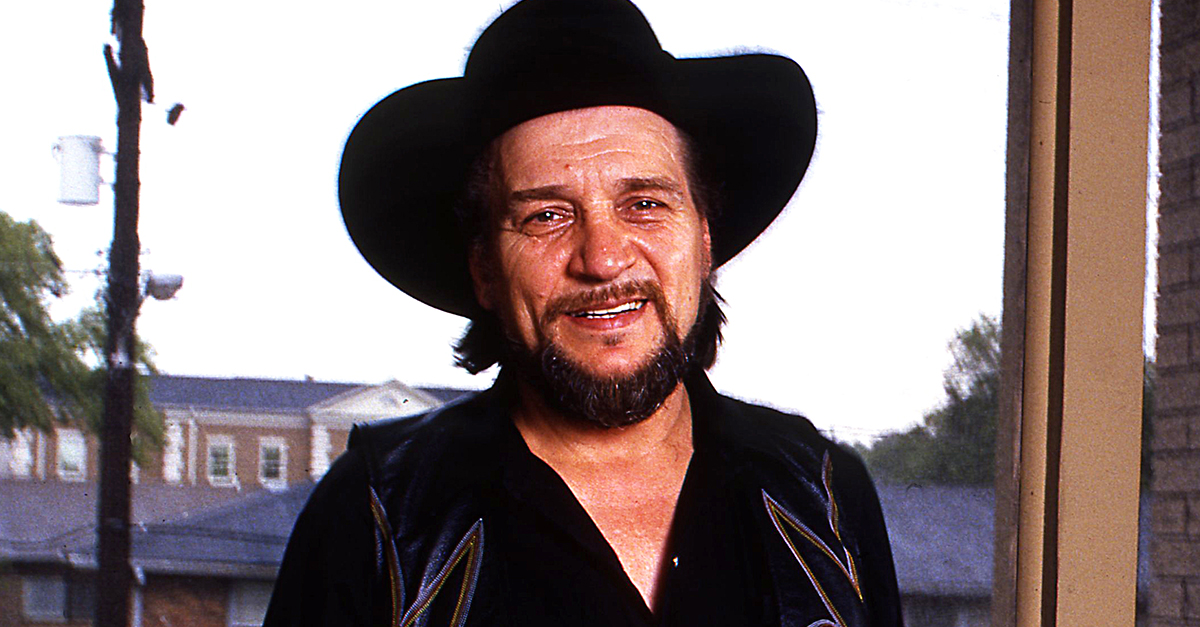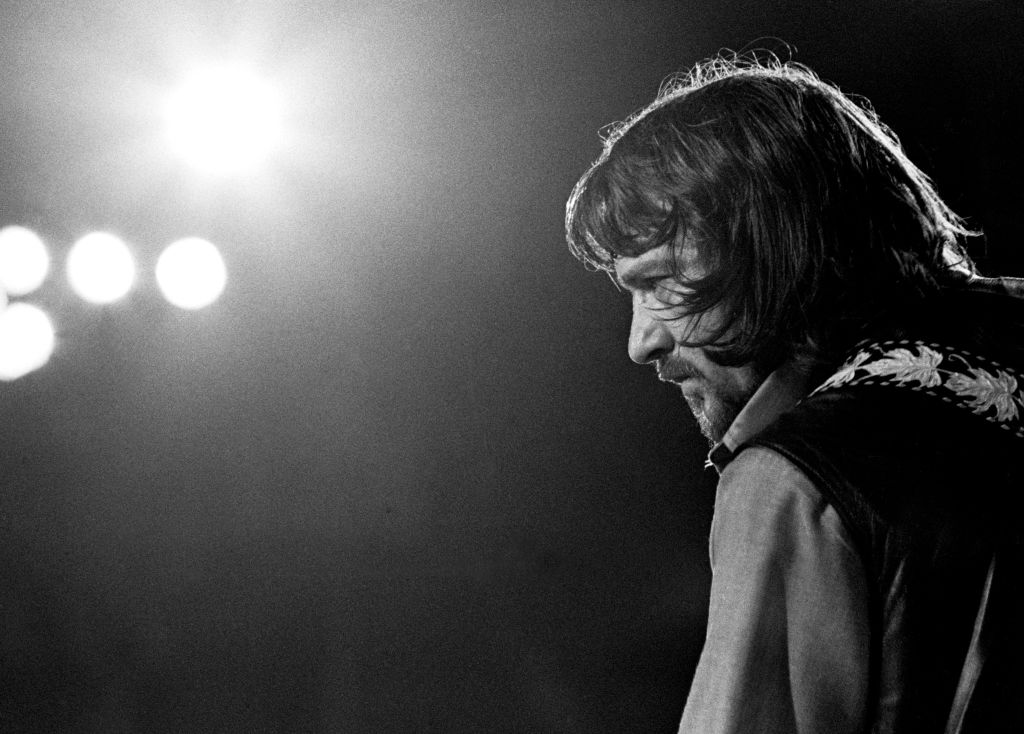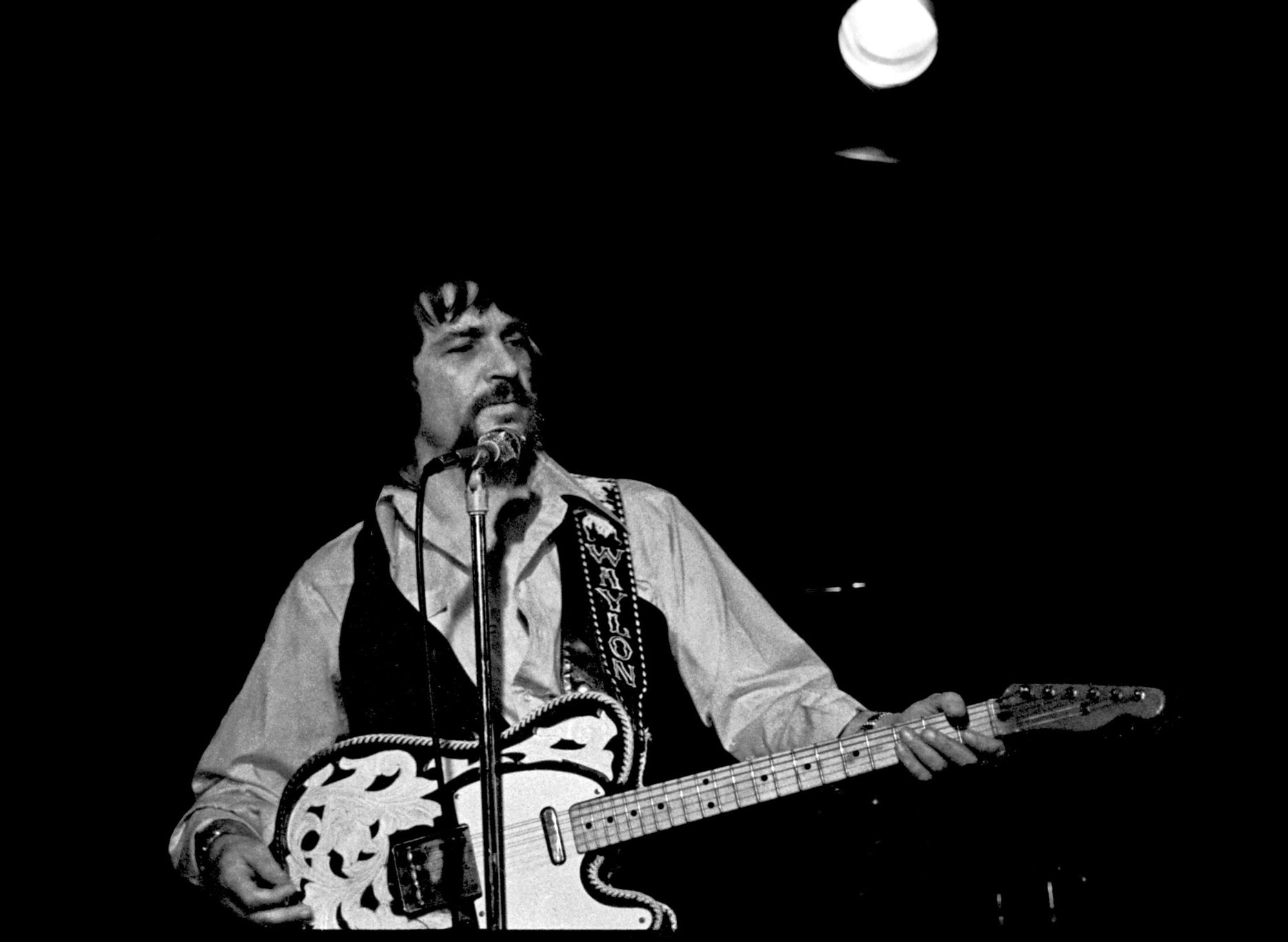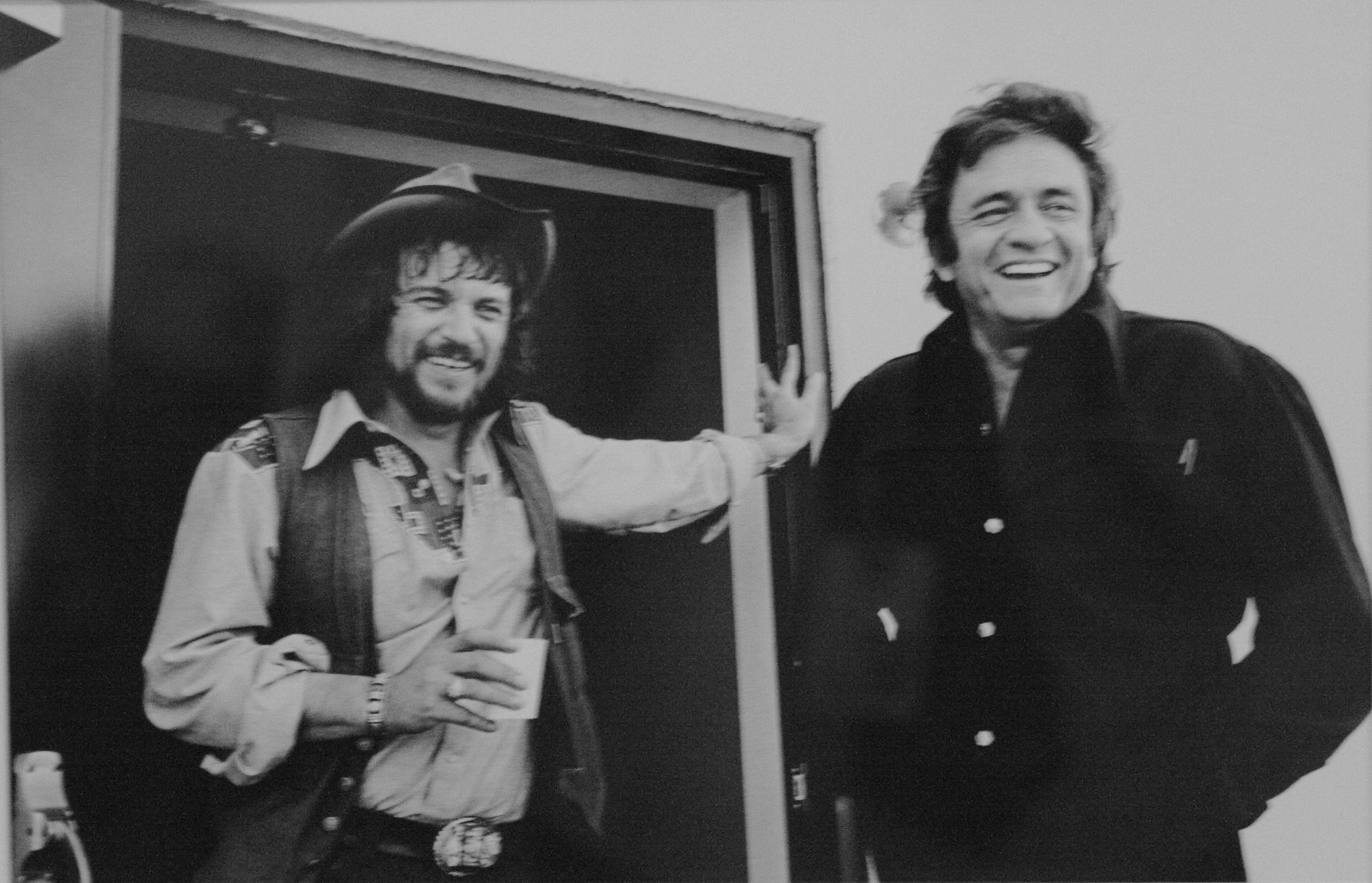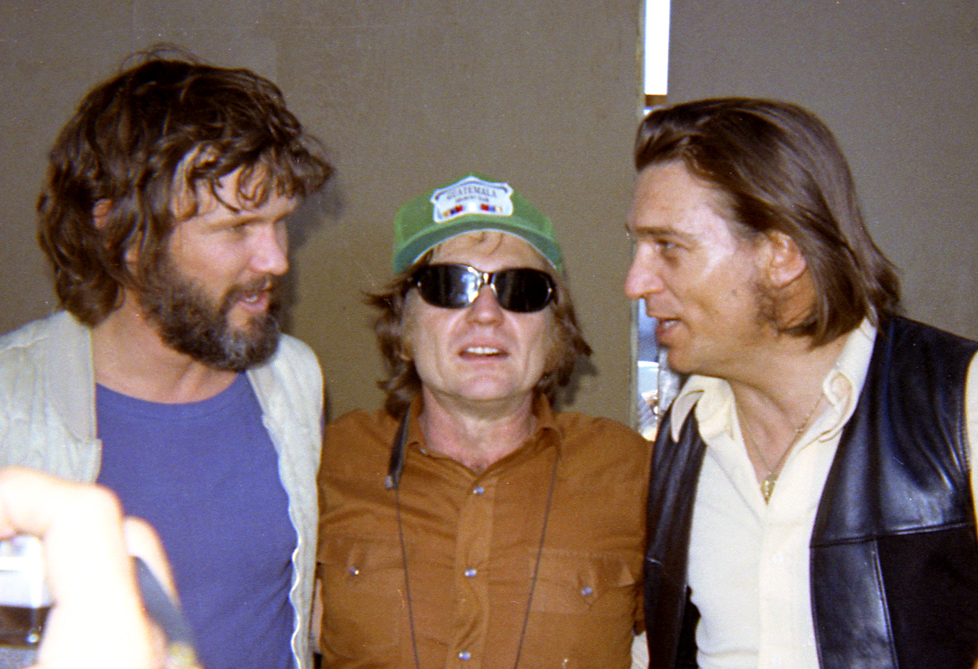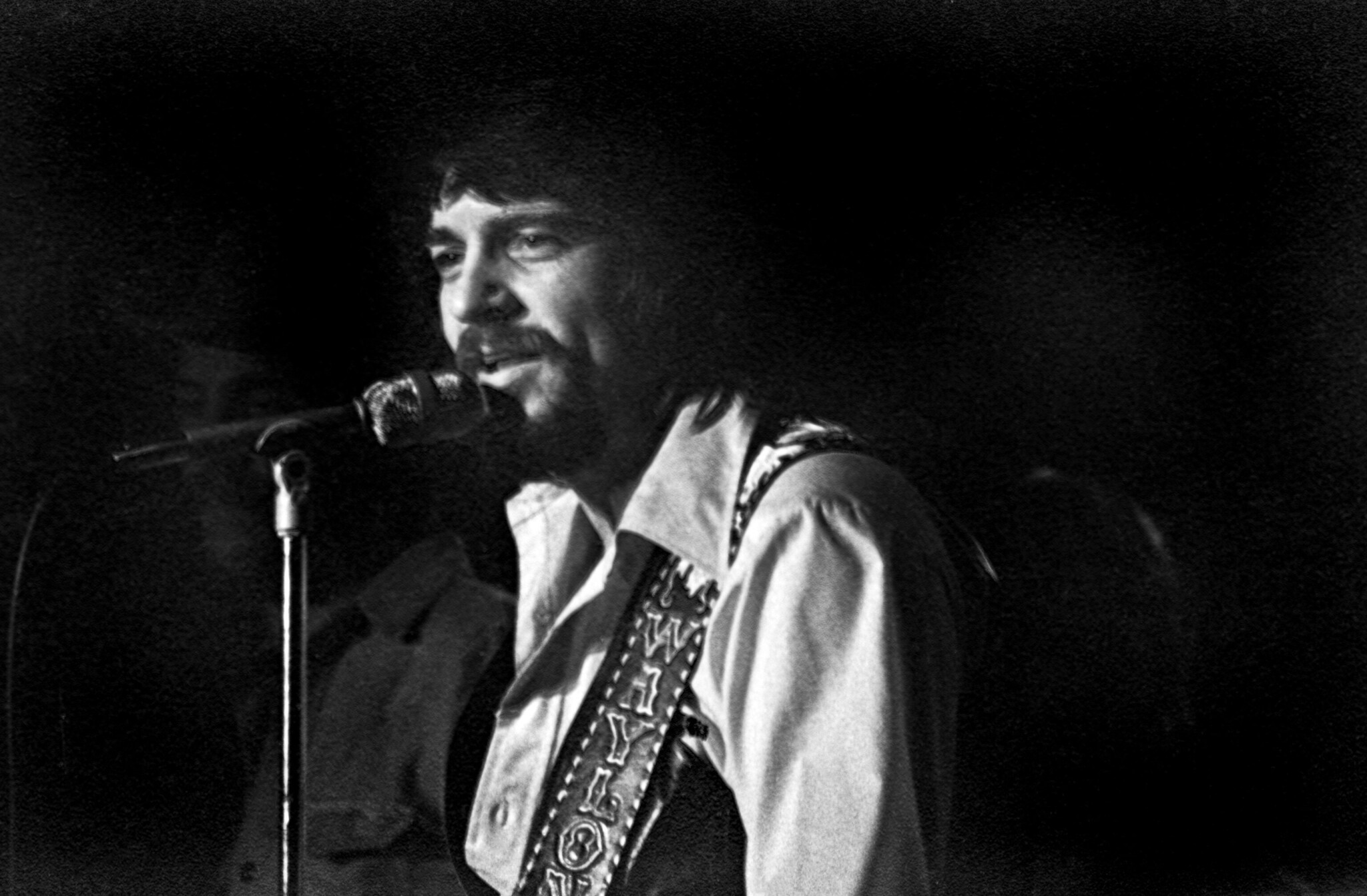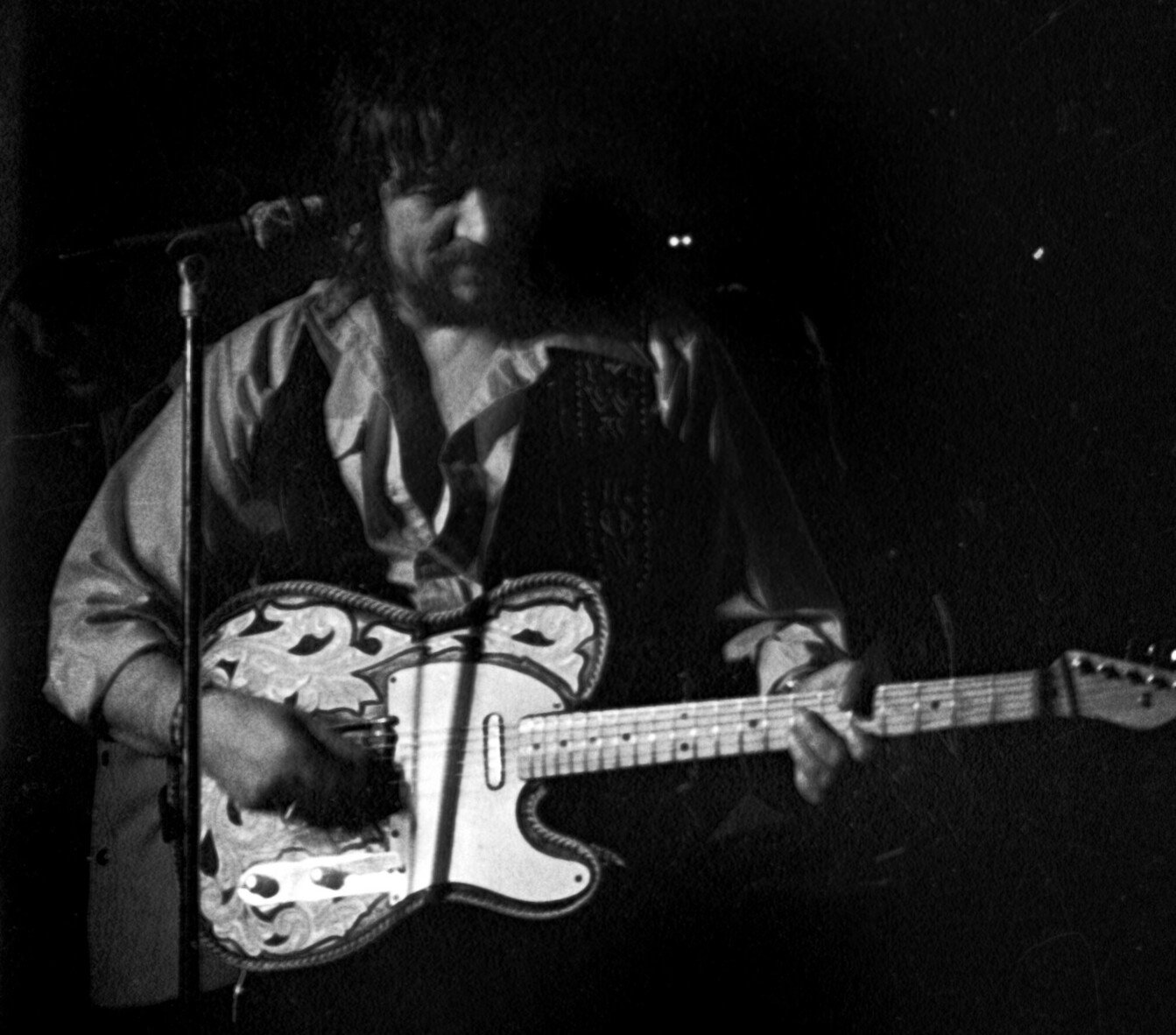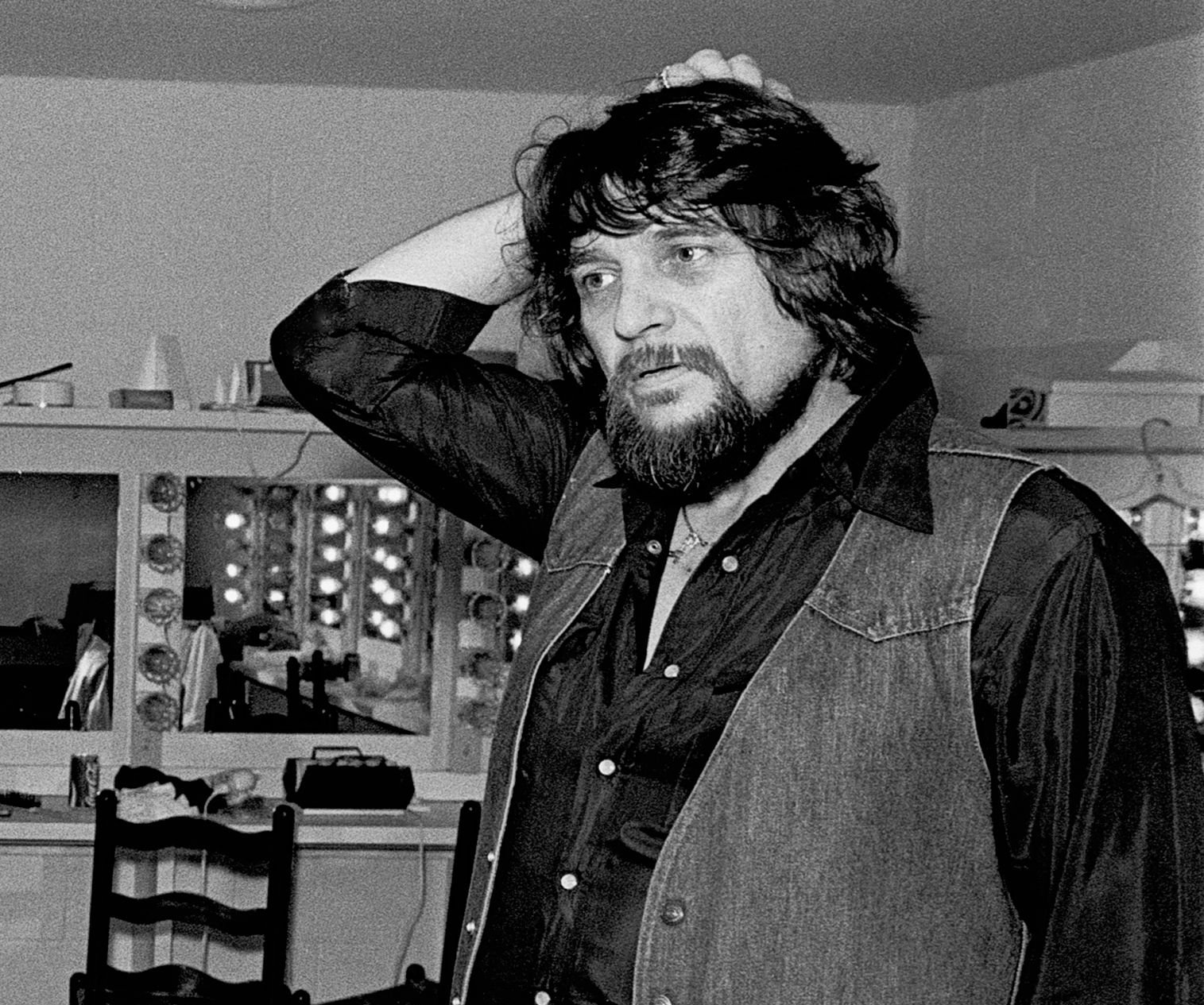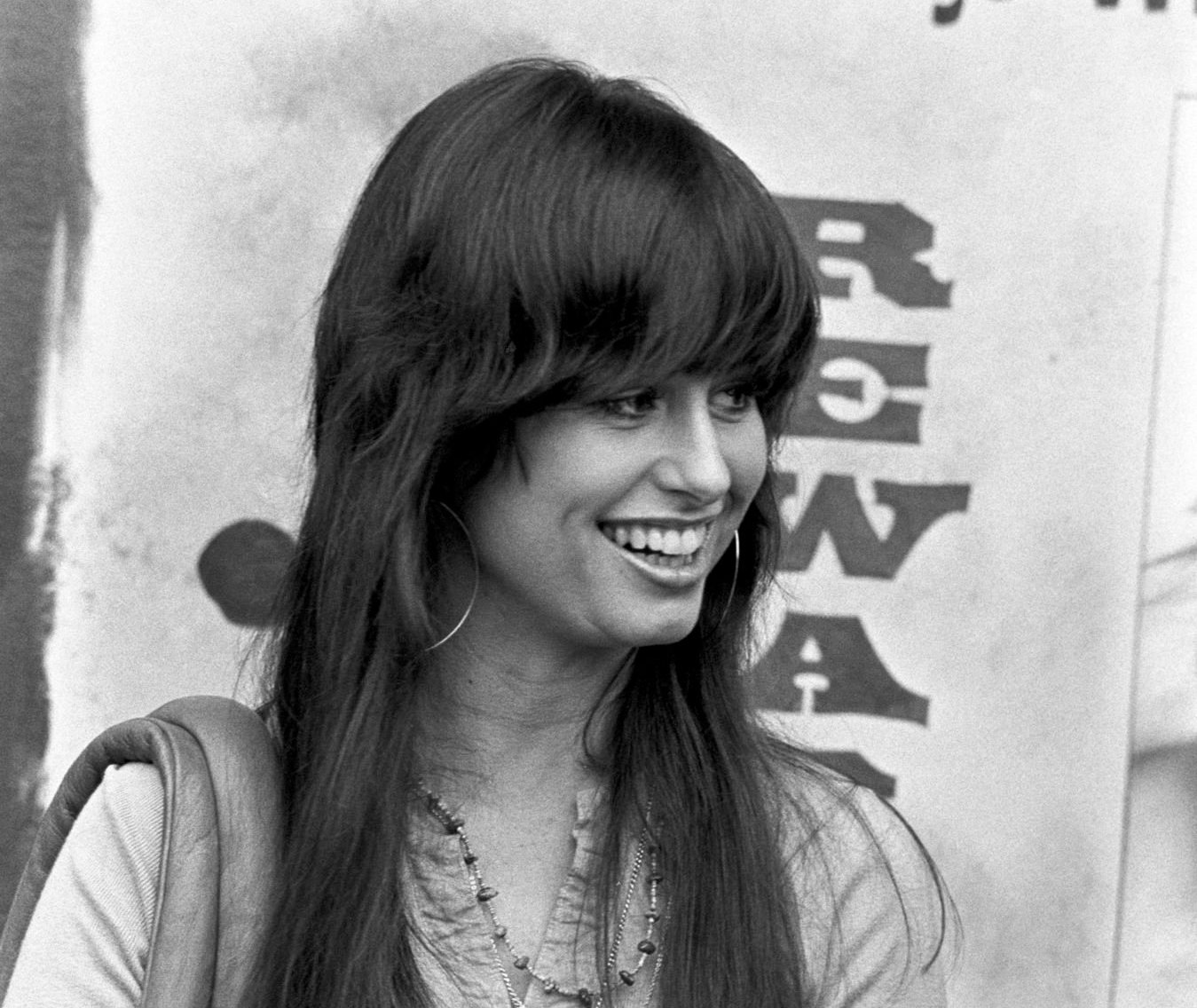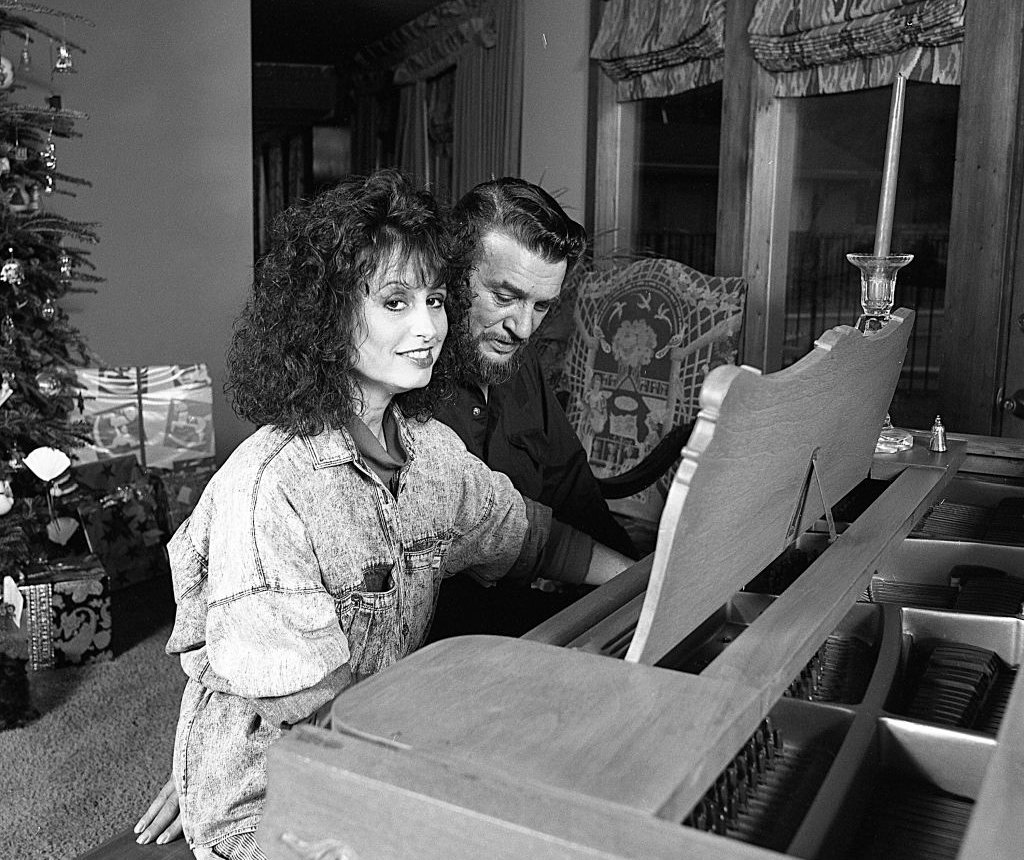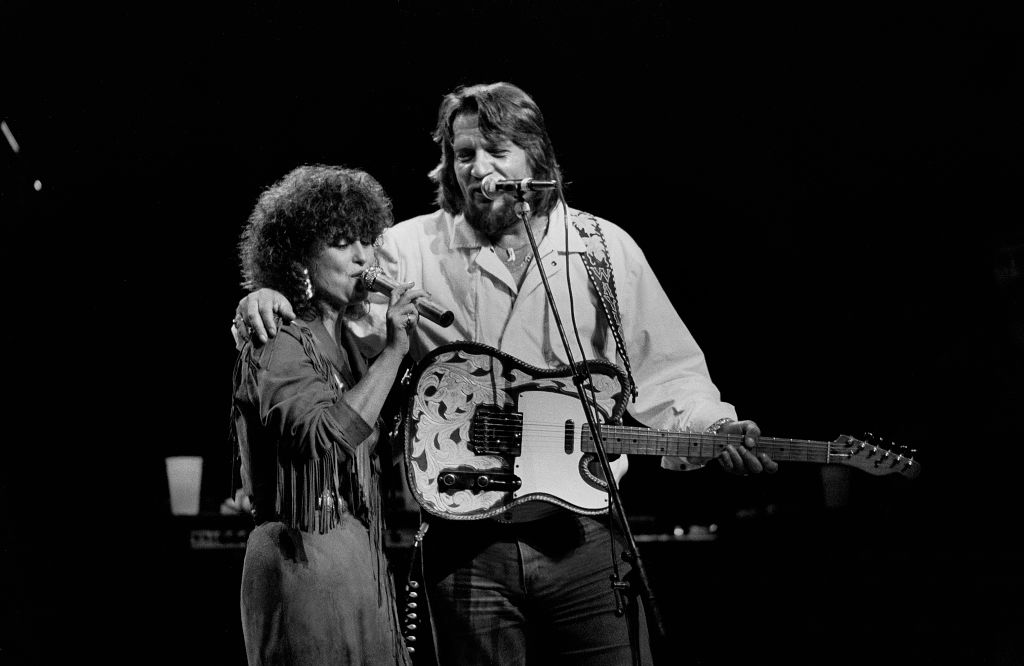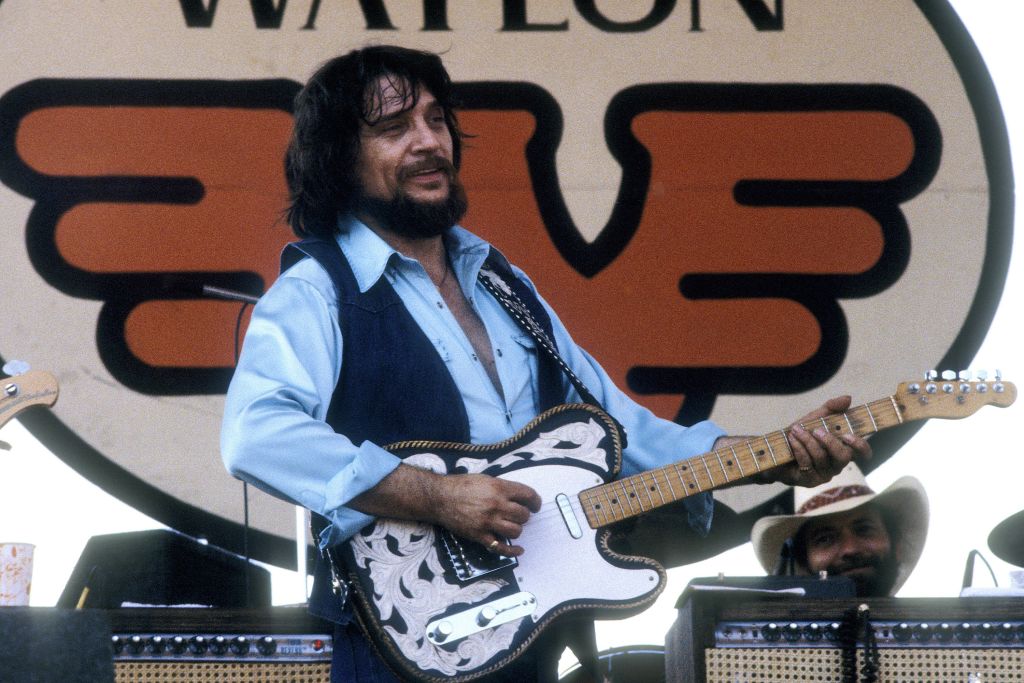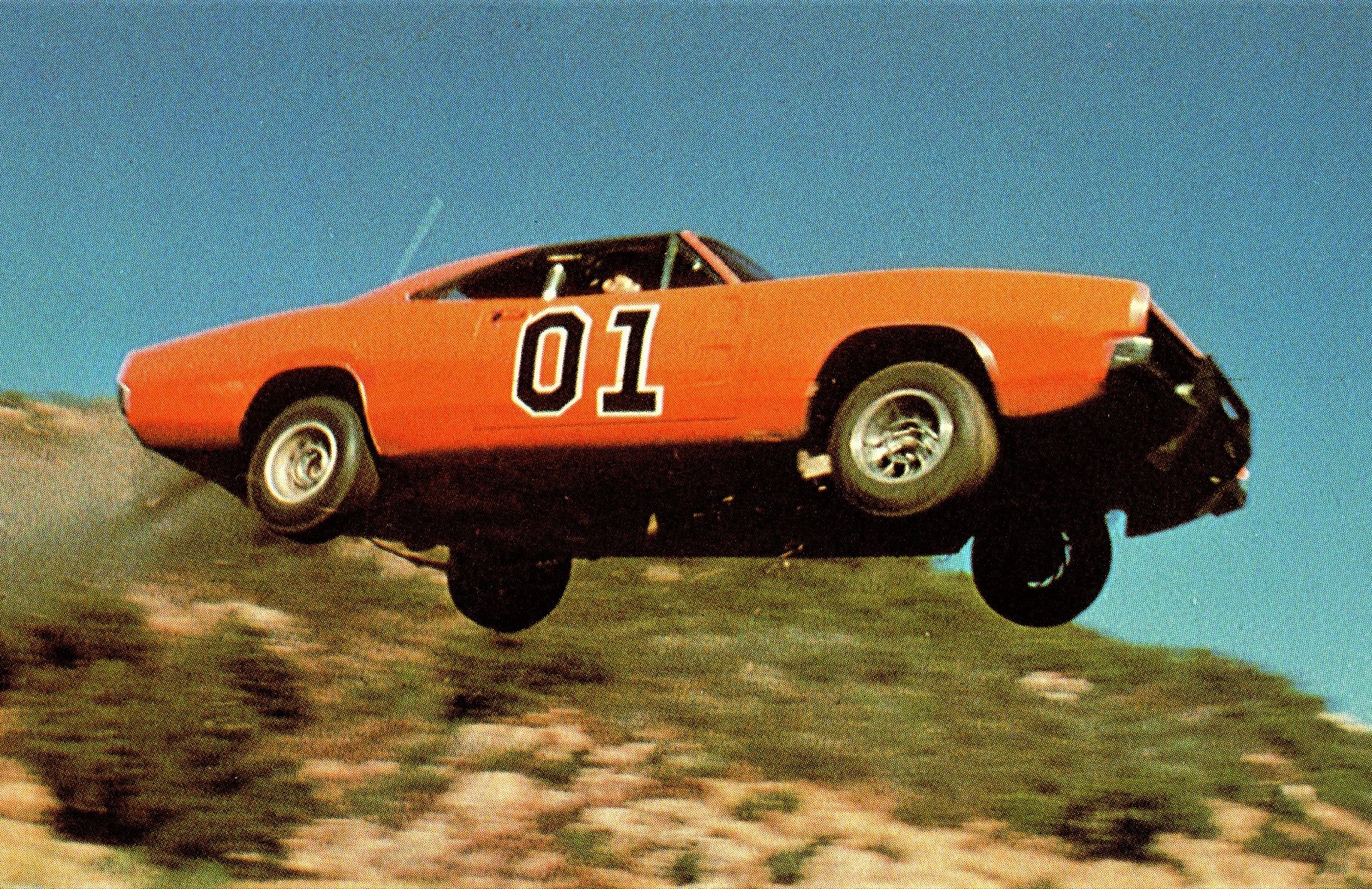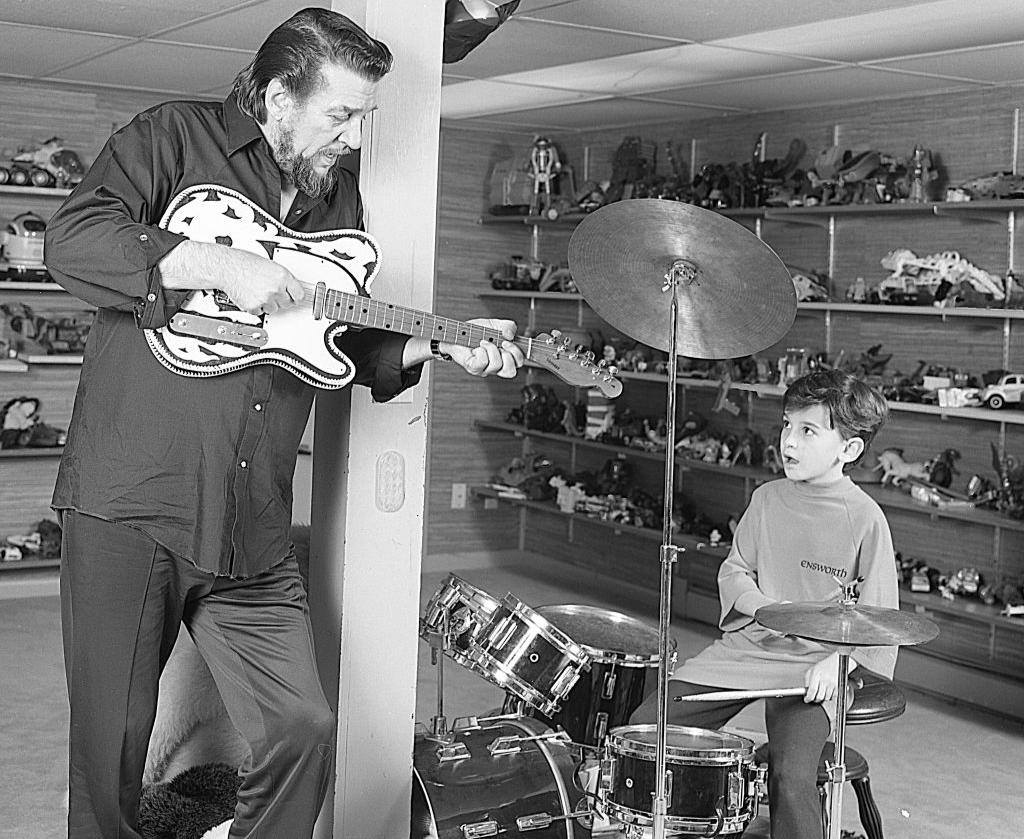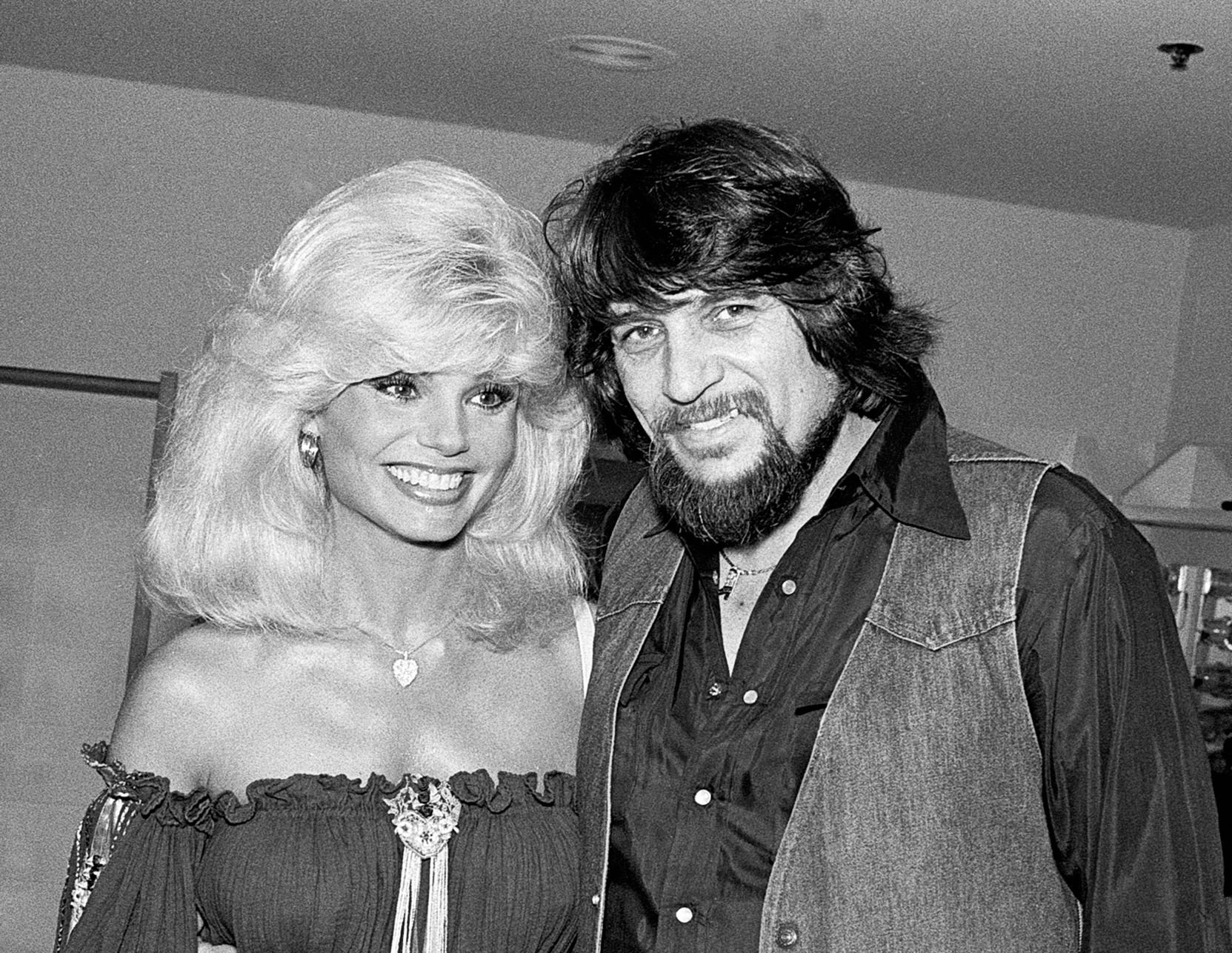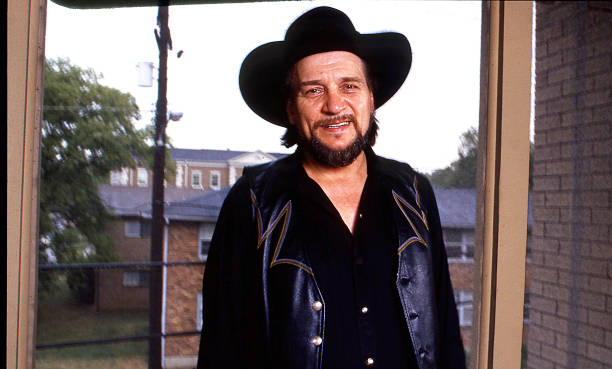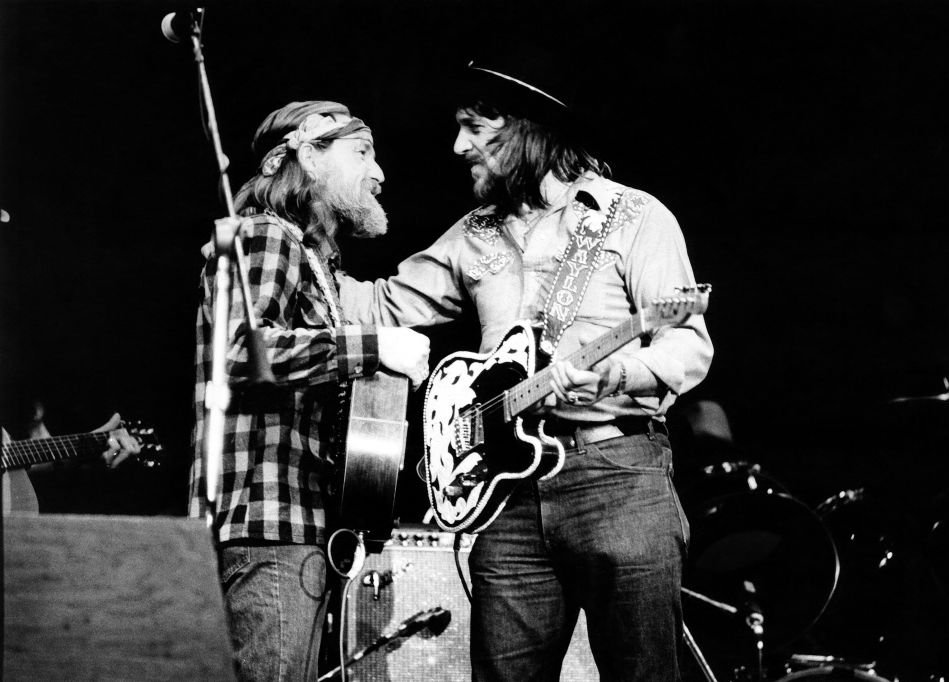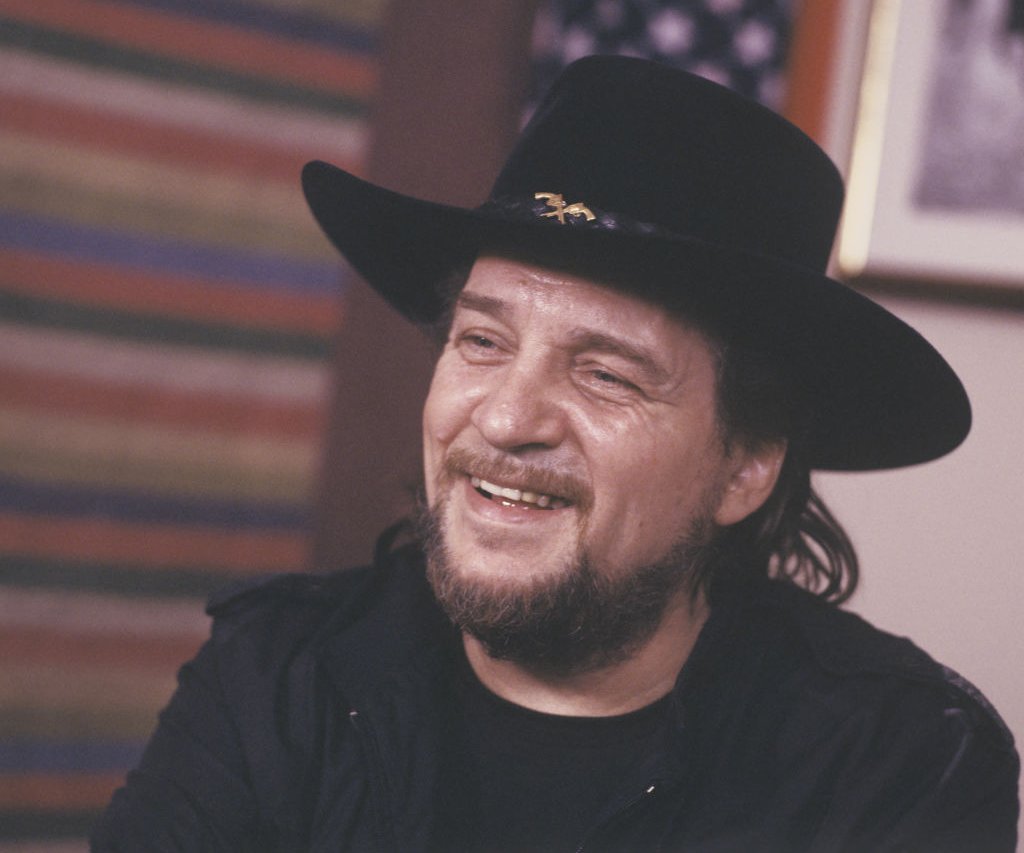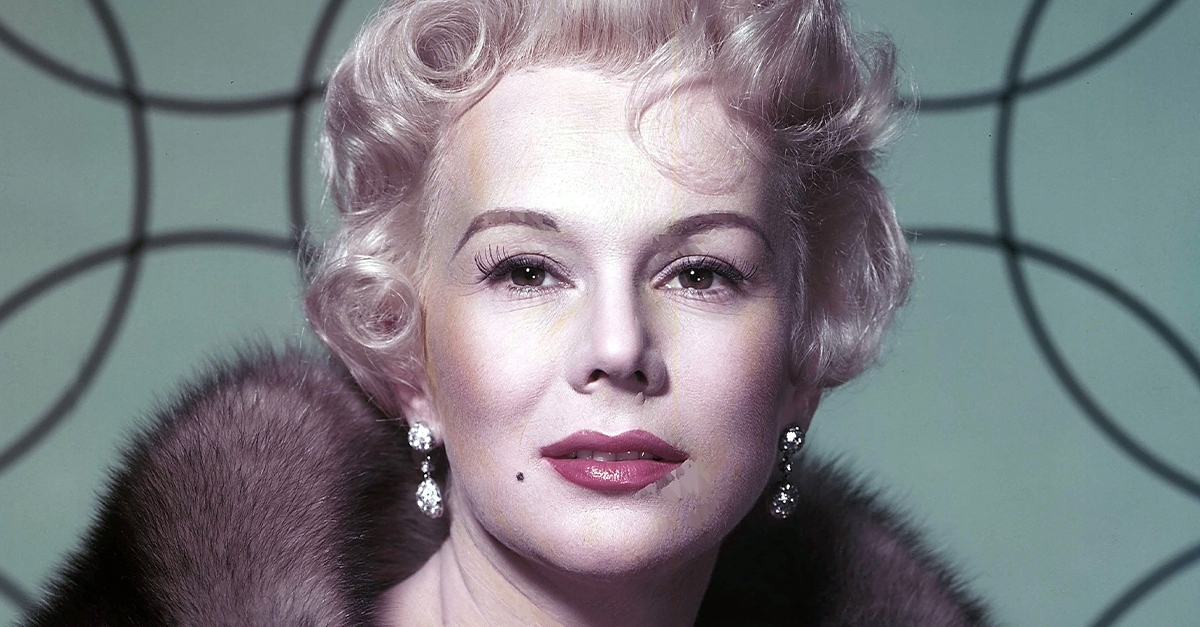Country music maverick Waylon Jennings may have been a good ol’ boy, but he was also a fighter who battled his demons, the law, the Nashville establishment—and one gut-wrenching event that would change his life forever.
1. He Lived Life On The Edge
For a country music superstar, Waylon Jennings lived a very rock ’n’ roll lifestyle, dodging disaster, addiction, and destruction at every turn. He narrowly avoided a fateful flight, survived a $1,500-a-day habit, and, despite a few close calls, never spent time in the slammer.
A true outlaw who never played by the rules, Jennings somehow lived to tell the tale—barely.
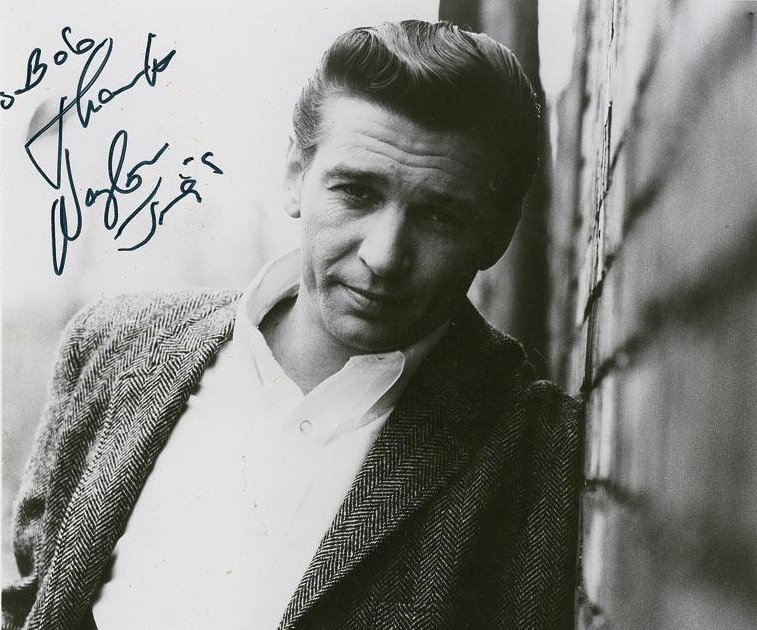 RCA Records, Wikimedia Commons
RCA Records, Wikimedia Commons
2. He Was A True Texan
According to Jennings, “When you’re born in Texas, you think that you’re a little bit taller, a little bit smarter, and a little bit tougher than anybody else”—and this definitely tracks despite his humble beginnings. He was born on June 15, 1937, to farm laborers Lorene and William Jennings, who lived and worked on a cotton farm near Littlefield, Texas.
Unfortunately, this Texas swagger would land Jennings in a whole mess of trouble.
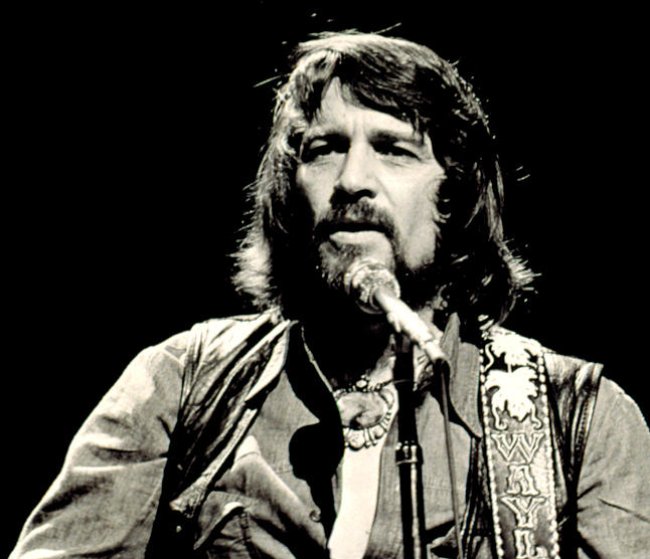 RCA Records, Wikimedia Commons
RCA Records, Wikimedia Commons
3. He Struck A Chord
Even though his family was dirt poor with the floors to match, Jennings’ mother bought him a used guitar when he was eight and taught him to play “Thirty Pieces of Silver”. He was good enough to perform at local events and even won a TV talent show.
By 14, he already had a weekly 30-minute radio show. But just as his star began to rise, his future seemed to be tanking.
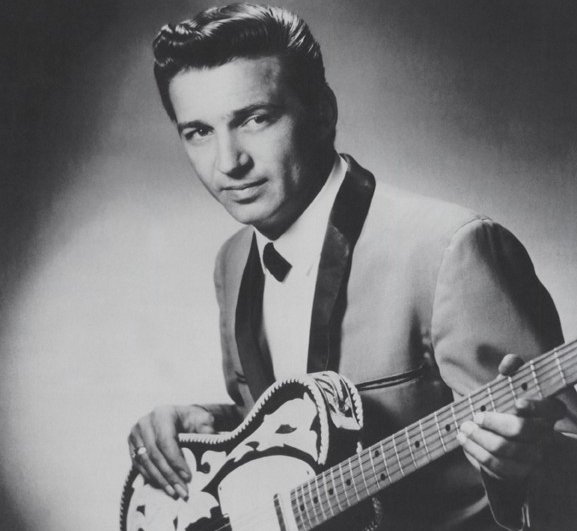 RCA Records, Wikimedia Commons
RCA Records, Wikimedia Commons
4. He Was Not A Star Student
It seems hard to imagine students getting beat on the behind while the rest of the class watched, but this was de rigeur in those days—especially for Waylon Jennings. One time when the principal was coming toward him with a paddle, Jennings decided that enough was enough and snatched the paddle away from the dumbfounded man…
5. He Turned The Tables
Truly a born rebel, Waylon Jennings took a dramatic stand at school that day. He told the principal that he was going to paddle him. Jennings must have sounded pretty convincing, too, because the pair wound up in a two-hour standoff that only ended when the football coach stepped in to break it up.
Shortly after that, the (likely fed up) school superintendent convinced a 16-year-old Jennings to drop out.
6. He Worked Hard For The Money
Jennings’ father took it quite well, saying, “If you’re smart enough to quit school, you’re smart enough to work”. In one of Jennings’ earliest danger-dodging moments, he credits the fact that his dad forced him to work with saving his life. Not only was Jennings too tired to get into trouble with the other dropouts, but he also got an early taste of the backbreaking dead-end jobs Littlefield had to offer.
He was now more determined than ever to find a way out.
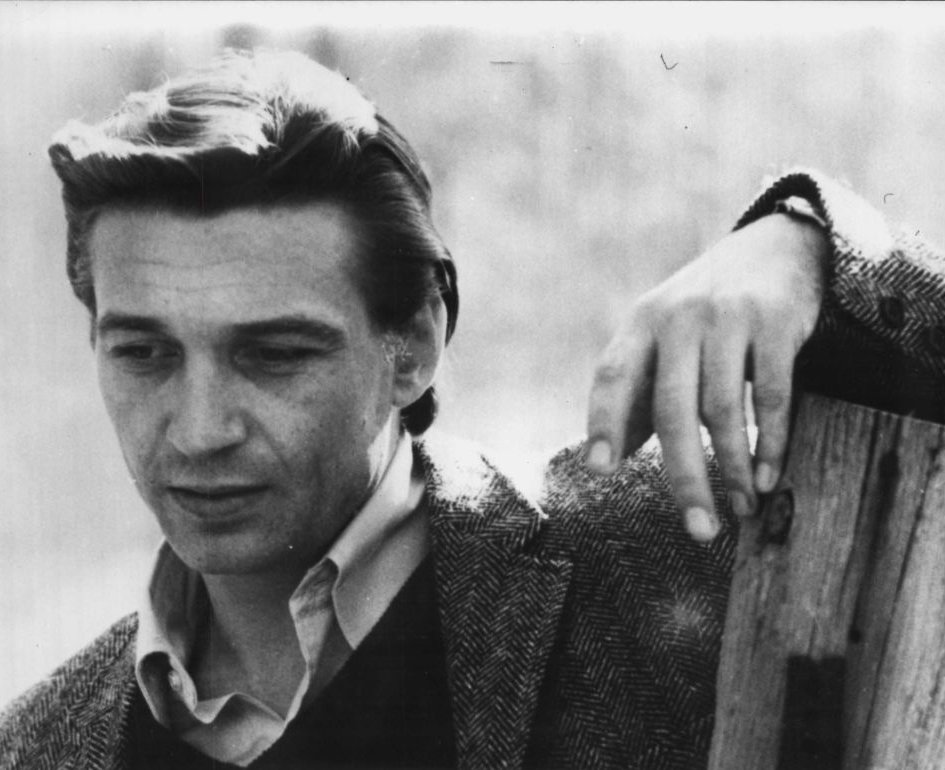 Unknown Author, Wikimedia Commons
Unknown Author, Wikimedia Commons
7. He Played His Heart Out
Waylon Jennings realized that he was holding the key to escaping Littlefield right in his hands. It didn’t matter that he could never afford music lessons or that he’d been expelled from music class for “lack of musical talent”. His guitar was his way out and he played it as if his life depended on it—because, well, it kinda did.
Before he knew it, Jennings’ talent started opening doors a grubby Littlefield boy could’ve only dreamed of…
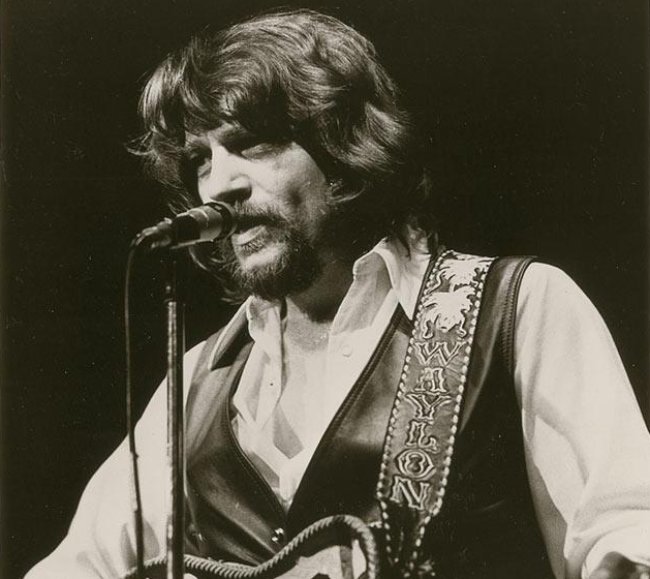 RCA Records, Wikimedia Commons
RCA Records, Wikimedia Commons
8. He Was On The Rise
Jennings’ talent was starting to turn heads. He landed regular gigs on a country radio station and even scored a job as a DJ in Lubbock, Texas. Jennings had grown up fast. Not only was he finally out of Littlefield, but he also tied the knot at just 18 years old to Maxine Caroll Lawrence.
Jennings thought life couldn’t get any better, but something big was about to happen.
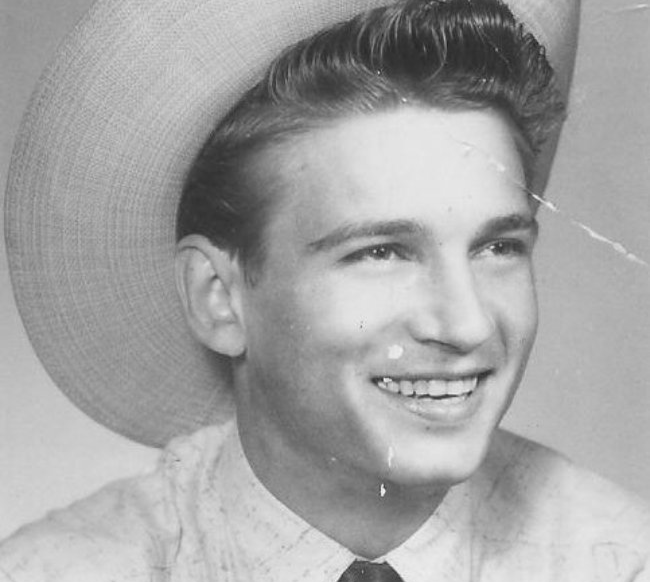 Unknown Artist, Wikimedia Commons
Unknown Artist, Wikimedia Commons
9. He Got Lucky
In his line of work, Waylon Jennings constantly rubbed shoulders with musicians, but one in particular spotted his raw talent—none other than a bespectacled up-and-comer from Lubbock named Buddy Holly. Holly told Jennings, “The way you sing, there’s no limit,” and decided to take him under his wing. Unfortunately, there was one small problem…
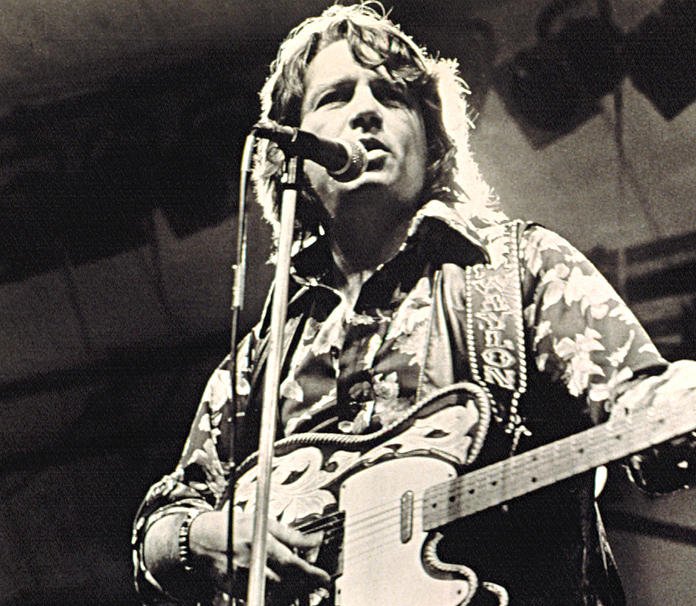 RCA Records, Wikimedia Commons
RCA Records, Wikimedia Commons

History's most fascinating stories and darkest secrets, delivered to your inbox daily.
10. He Was A Diamond In The Rough
At the time, Waylon Jennings didn’t exactly scream “star material”. In fact, some of his radio colleagues were downright embarrassed by his shabby look—bad haircut, same shirt all week, you get the idea. Cue the makeover montage…when Holly had finished Jennings’ glow-up, he was almost unrecognizable.
Holly was a man with a plan, it’s just too bad that it would soon come crashing down.
11. He Was Put On A Crash Course
Buddy Holly didn’t stop at just giving Waylon Jennings a makeover—he went all in. He booked Jennings a recording session and even invited him on his next tour. As Jennings put it, “I couldn’t have been more surprised when Buddy walked into the station one day, pitched me an electric bass guitar, and said, ‘You have two weeks to learn to play that thing’”.
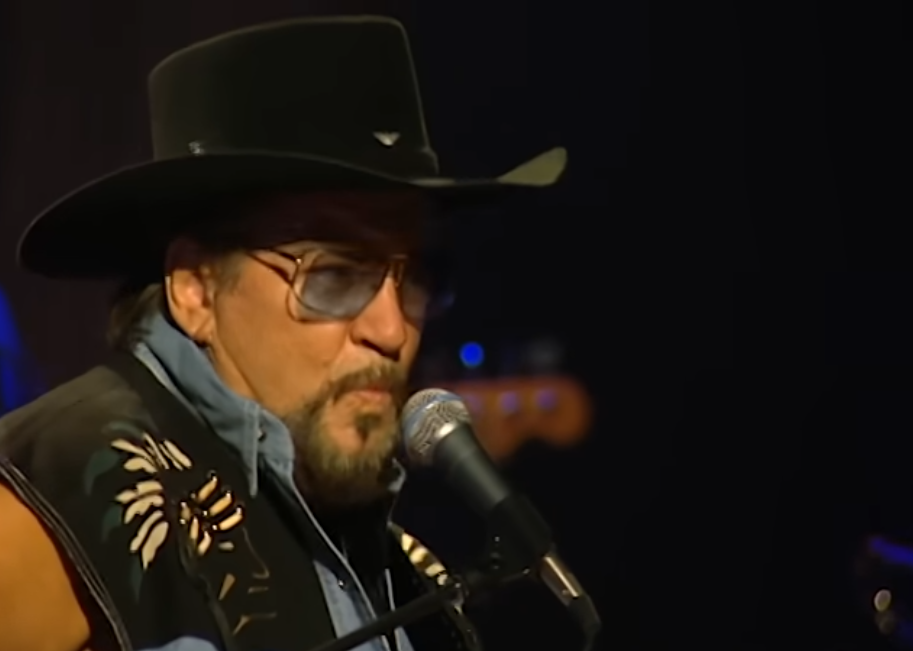 Legacy Recordings, Never Say Die: The Final Concert Film (2007)
Legacy Recordings, Never Say Die: The Final Concert Film (2007)
12. He Couldn’t Have Dreamed This Up
Sure, young Jennings was “green as a gourd” (in his words) but Holly had an eye for talent. Before long, Jennings joined Holly’s band on the Winter Dance Party Tour along with several other buzzy new acts. It was a huge opportunity—but Jennings and the rest of those musicians were getting in way over their heads.
As their unheated bus crossed the freezing upper Midwest, Jennings had to face up to the fact that it wasn’t quite the glamorous gig he’d been dreaming of. And it was about to get worse.
 Legacy Recordings, Never Say Die: The Final Concert Film (2007)
Legacy Recordings, Never Say Die: The Final Concert Film (2007)
13. He Was On A Wild Ride
As if things weren’t rough enough, the tour schedule was brutal—25 shows with zero nights off. Yes, you read that right: no nights off. With hundreds of miles between venues in an unheated bus on snowy pre-Interstate rural roads, things were pretty miserable. And then, it would break down, stranding Jennings and his fellow musicians in the bitter cold.
It was so bad that some of the performers even got frostbite and the flu. It was only a matter of time before something had to give.
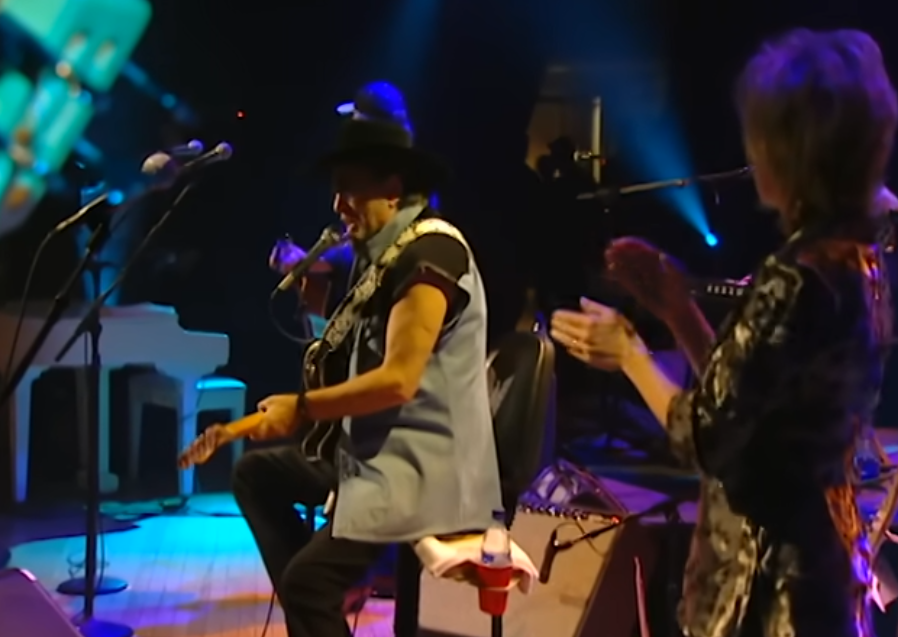 Legacy Recordings, Never Say Die: The Final Concert Film (2007)
Legacy Recordings, Never Say Die: The Final Concert Film (2007)
14. His “Boss” Made A Big Move
Can you imagine Taylor Swift shivering away with a fever on her tour bus, hand-washing her clothes in a motel sink, and praying they’d dry before showtime? Hah! But that’s exactly how desperate things got for Holly and his crew. In the era long before private jets, Buddy Holly made a bold move and chartered a tiny plane for himself, his guitarist, and Jennings.
Fate, however, had other plans...
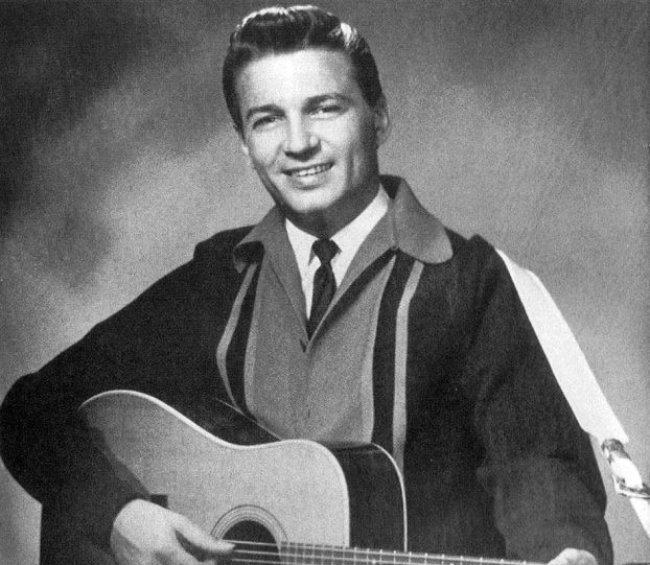 A&M Records, Wikimedia Commons
A&M Records, Wikimedia Commons
15. He Made A Deal That Would Haunt Him
When word got out about the plane, Waylon Jennings was suddenly approached by the Big Bopper. Desperate for warmth, the flu-addled singer asked for Jennings’ seat on the aircraft. Jennings said, “If it’s okay with Buddy, it’s okay with me”. Meanwhile, across the room, Buddy’s other band member lost a coin toss and Ritchie Valens landed a seat on the plane.
Nobody knew that the trio—Buddy Holly, the Big Bopper, and Ritchie Valens—were about to go down in history…big time.
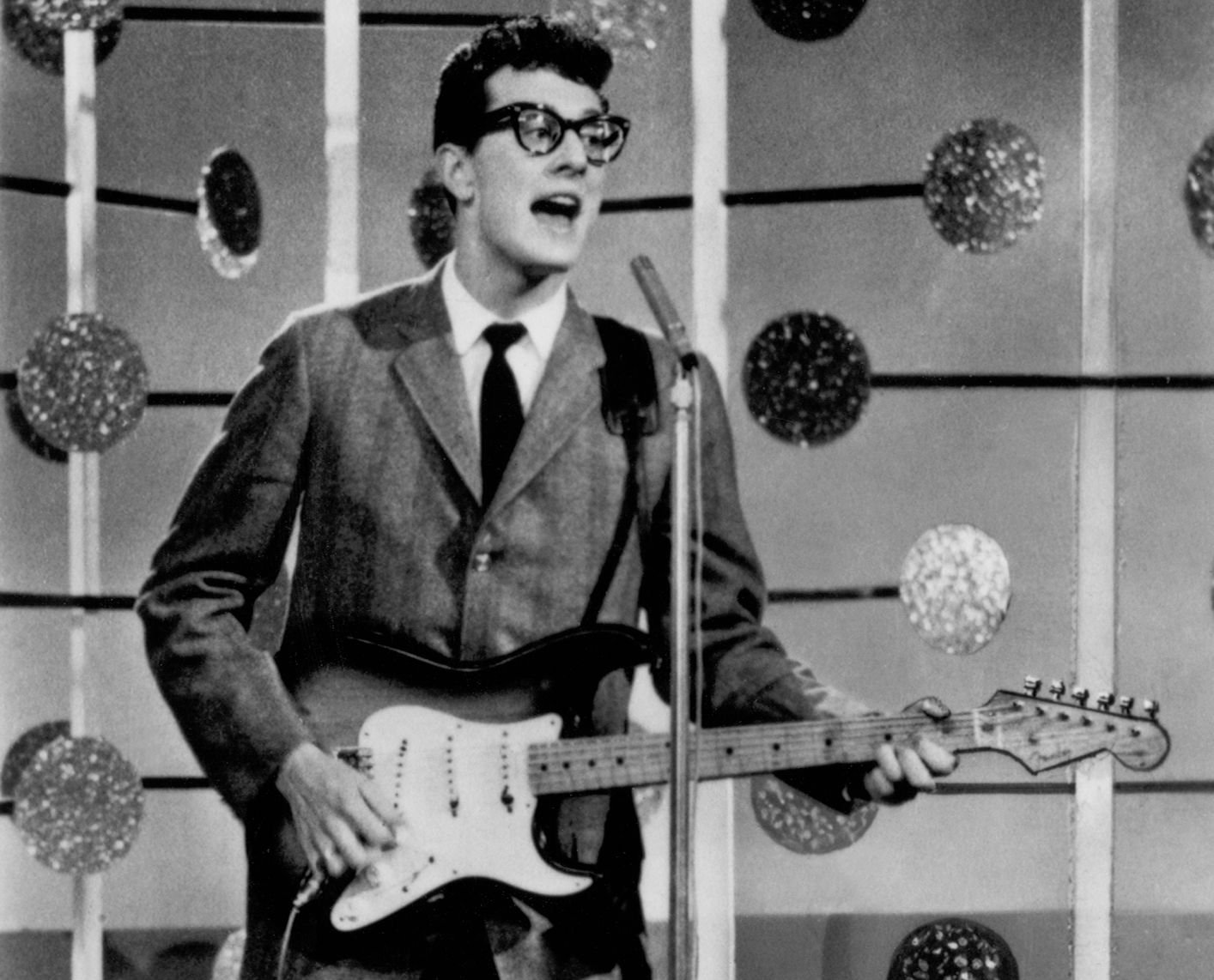 Michael Ochs Archives, Getty Images
Michael Ochs Archives, Getty Images
16. He Got The Worst News
The next morning, the tour bus pulled into Moorhead and as the musicians thawed out, their tour manager went into their hotel, but then came rushing back out. He asked to talk to Jennings, and one look at the manager’s face told Jennings something was very wrong. Holly’s guitarist went inside, and moments later he returned with devastating news.
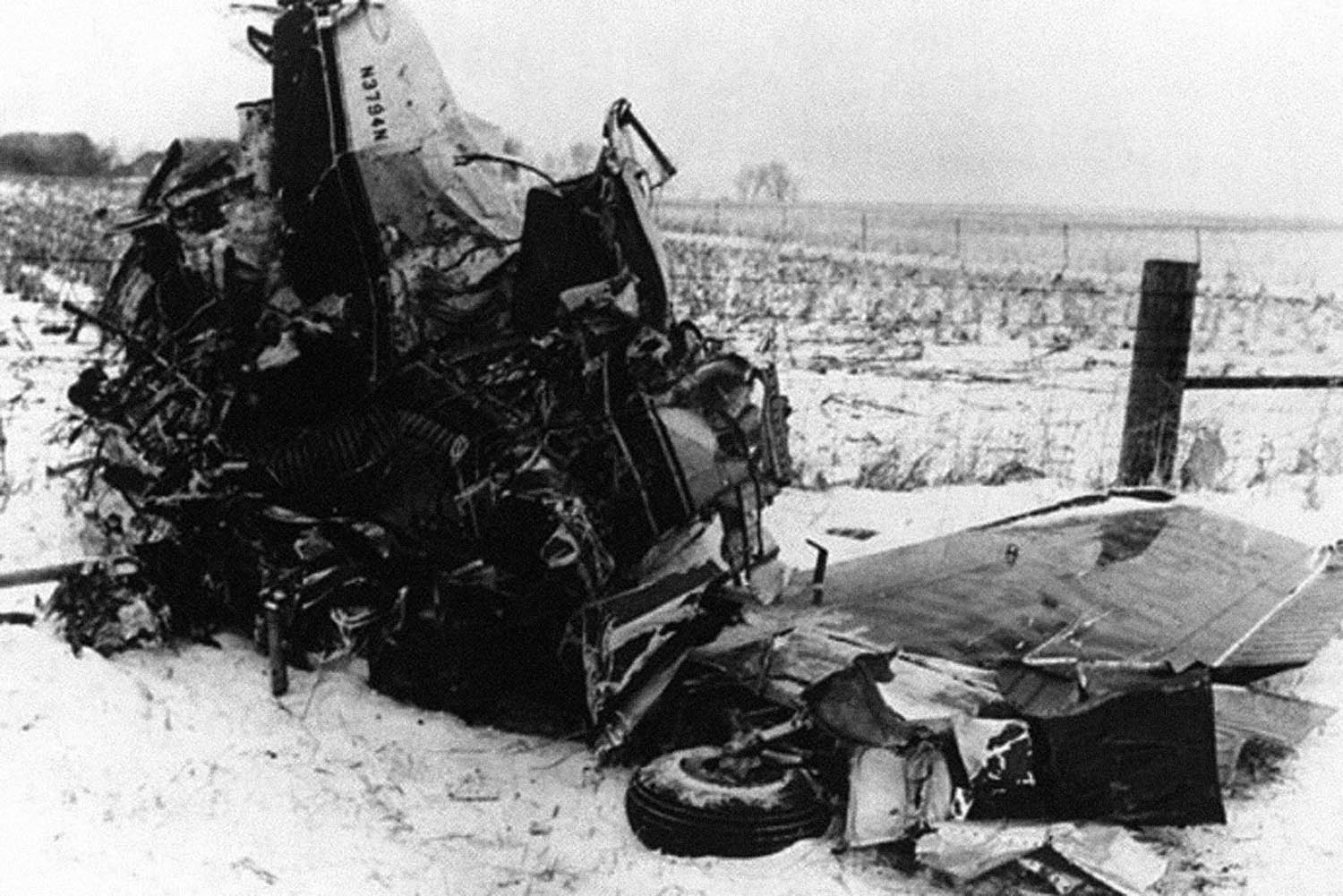 Civil Aeronautics Board, Wikimedia Commons
Civil Aeronautics Board, Wikimedia Commons
17.He Was A Broken Man
After losing his friend and mentor Buddy Holly—not to mention his other tourmates—Waylon Jennings didn’t feel like playing another note, but the agency forced everyone to finish the tour, threatening that they wouldn’t pay them. Afterward, a devastated Jennings went back to his radio station job, but the spark that made him the wildman DJ was gone. He couldn’t fake it anymore. As he put it, “I was empty, drained of hope”.
And if that wasn’t enough, things were starting to unravel at home too.
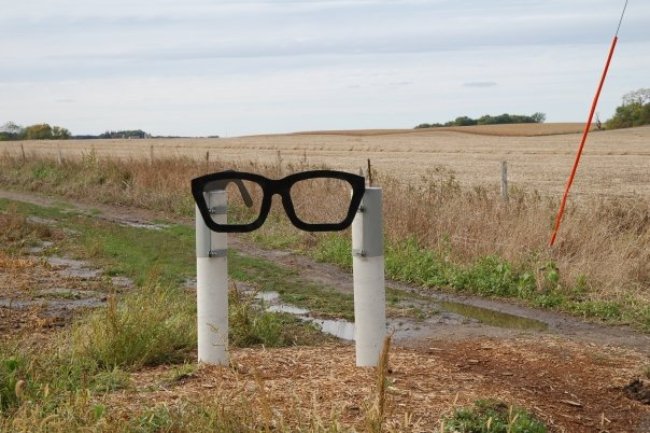 Dsapery, CC BY 3.0, Wikimedia Commons
Dsapery, CC BY 3.0, Wikimedia Commons
18. He Walked Into A Dark Surprise
One night, Jennings came home late to a disturbing sight—his wife, Maxine, standing on a chair with a necktie around her neck, tied to a light bulb. As soon as he walked in, she jumped. The bulb shattered and she came crashing to the floor. Jennings, unfazed, chalked it up to her strange sense of humor.
Even though they both knew their marriage was falling apart, they kept having kids. In 1960, their third child was born—they named him Buddy, after the friend Jennings had lost.
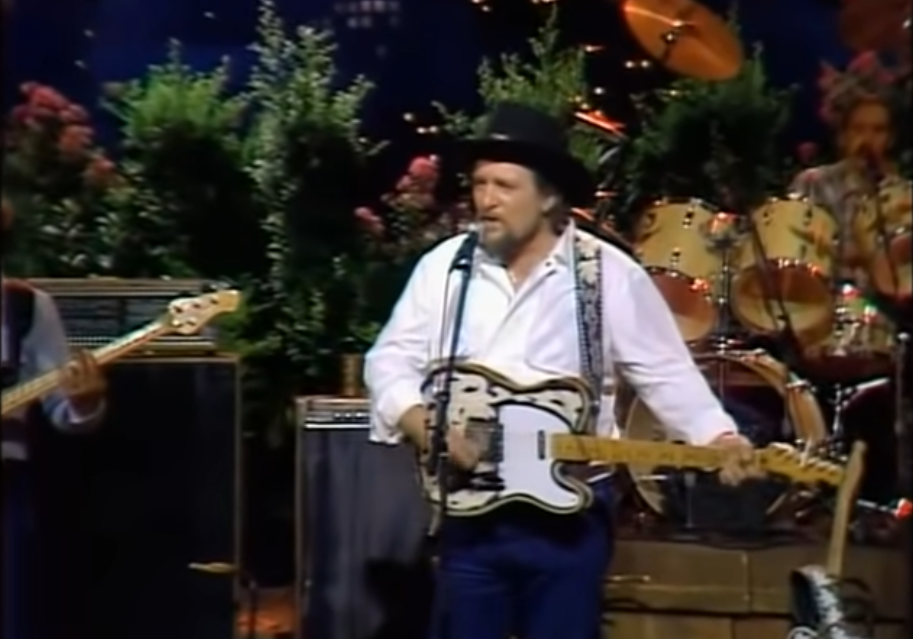 New West Records, I've Always Been Crazy - 1984
New West Records, I've Always Been Crazy - 1984
19. He Was Lost
Waylon Jennings was struggling to support his ever-growing clan, and things only got harder when his father-in-law fell seriously ill. The family packed up and moved to Arizona to be closer to him, while Waylon bounced between radio stations, hoping something would stick. It didn’t—until he finally mustered the courage to get back on stage.
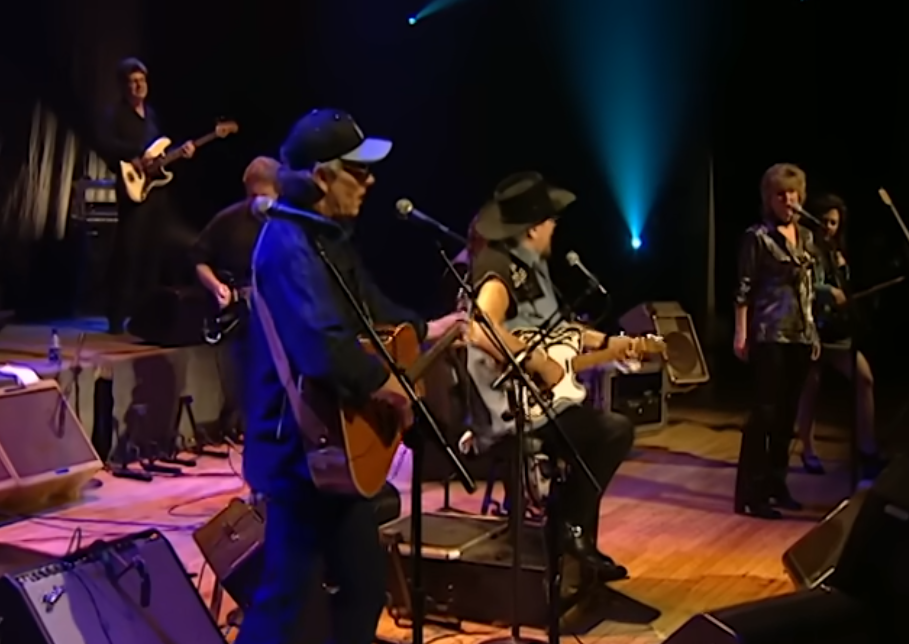 Legacy Recordings, Never Say Die: The Final Concert Film (2007)
Legacy Recordings, Never Say Die: The Final Concert Film (2007)
20. He Found Trouble
Yet again, music came to Jennings’ rescue—or at least, it got him on the road and away from his wife Maxine’s temper. Then, of all the juke joints in all the towns, Jennings had to walk into Lynne’s. She was a sassy and spirited older woman who hired him to play at her club, and things heated up fast.
Sure, Jennings’ wife may have been well aware of the type of things happened on the road, but this time things were different.
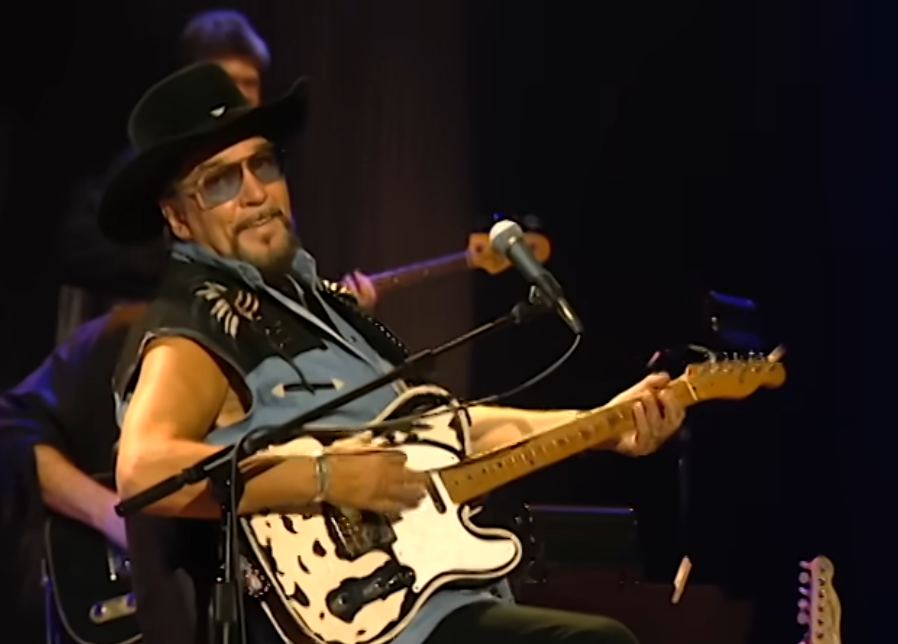 Legacy Recordings, Never Say Die: The Final Concert Film (2007)
Legacy Recordings, Never Say Die: The Final Concert Film (2007)
21. He Was Deep Into A Dangerous Liason
Waylon Jennings might have thought his dalliance with Lynne was yet another one night stand on tour—but he was so wrong. According to Jennings, Lynne “was great in bed” and had him “by the yin-yang on a downhill pull”. While Jennings was having his fun, Maxine, now pregnant with the couple’s fourth child, decided to move from Arizona to Texas.
Disaster ensued when Maxine somehow got the phone number to Lynne’s apartment. When Lynne answered the phone, well, let’s just say the jig was up.
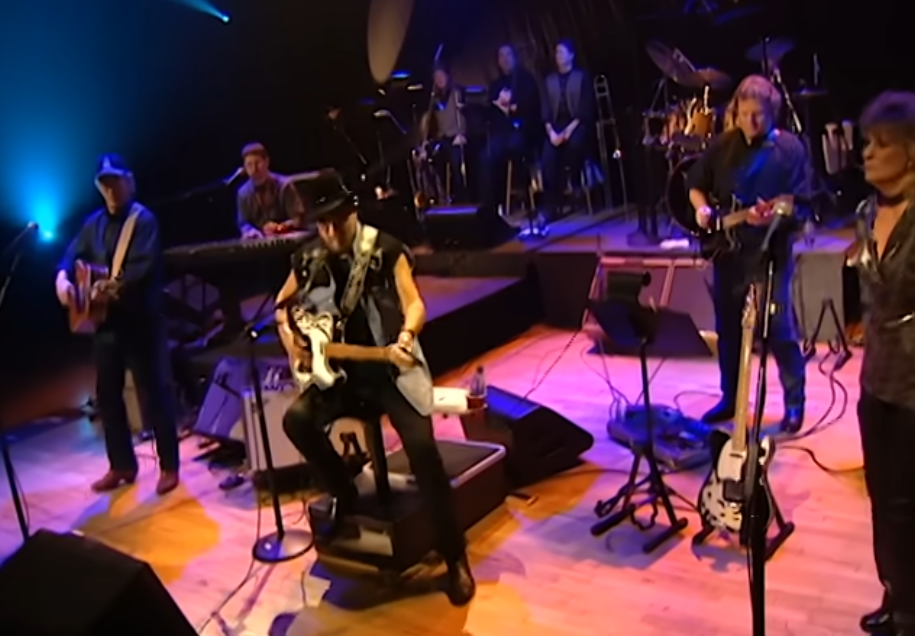 Legacy Recordings, Never Say Die: The Final Concert Film (2007)
Legacy Recordings, Never Say Die: The Final Concert Film (2007)
22. He Was About To Kick His Career (And More) Into High Gear
Waylon Jennings didn’t let his tumultuous personal life slow his music career down one bit. By the mid-60s, he had divorced Maxine, married Lynne, moved to Nashville and dropped his debut album, Folk Country, marking the start of a wildly productive period. But how did he manage to become so productive? Well now, that’s an interesting story…
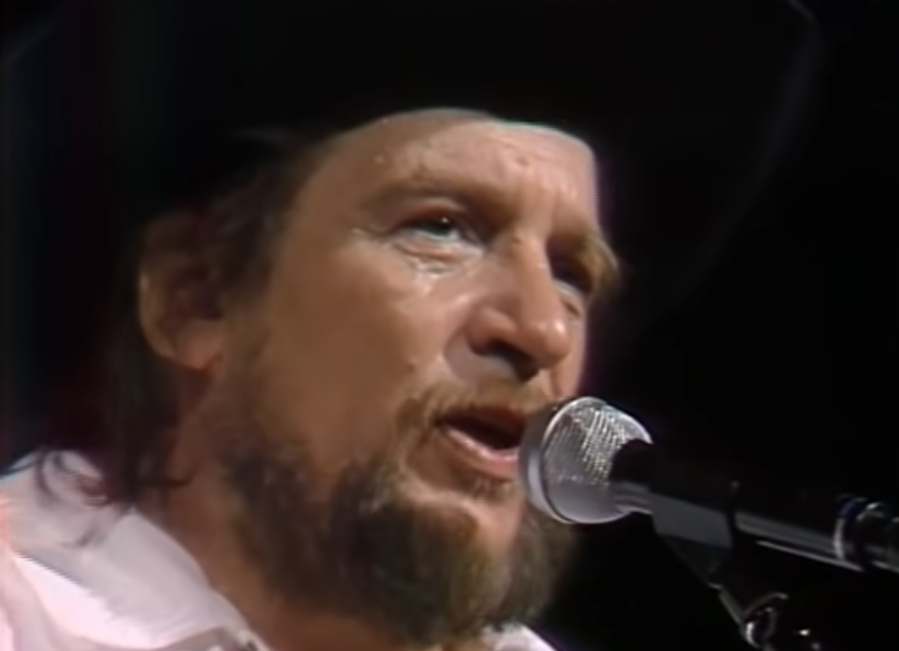 New West Records, I've Always Been Crazy - 1984
New West Records, I've Always Been Crazy - 1984
23. He Kicked His Habit Into High Gear, Too
When Jennings arrived in Nashville, he ended up sharing a one-bedroom apartment with none other than Johnny Cash—who just so happened to be popping amphetamines like candy. Jennings joined in and later bragged, “I prided myself on the fact that I could take more pills, stay up longer, sing more songs, and screw more women than most anybody you ever met”.
Unfortunately for Lynne, Cash wasn’t the only one Jennings was cozying up to.
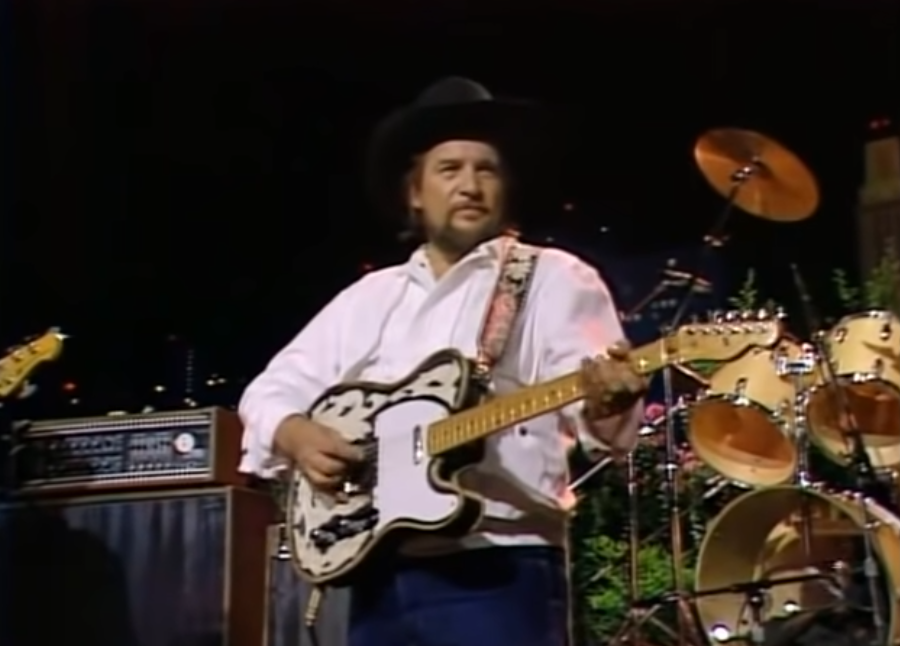 New West Records, I've Always Been Crazy - 1984
New West Records, I've Always Been Crazy - 1984
24. He Had A Secret
After five years of married life, Jennings’ relationship with Lynn was crumbling—and it was all his fault. He’d already started secretly seeing Barbara—a tall, blonde millionaire’s daughter—while waiting for the divorce. He even moved her into an apartment just down the hall from where he and Johnny Cash lived. When the pair finally married, Barbara’s father offered Jennings anything to keep her happy.
Too bad, the one thing she wanted, Jennings just couldn’t give…
25. He Was Too Wild To Settle Down
Let’s be real: Fidelity wasn’t exactly Jennings’ strong suit. To complicate matters, Barbara was able to throw money at the problem in a sneaky way. On one wild night, while touring with Hank Williams, Jennings mixed uppers and downers and was so out of control that Loretta Lynn had to march him around backstage just to sober him up.
Never too inebriated to fool around, though, Jennings brought a lovely lady back to his room that night. Unfortunately, she wasn’t some random groupie…
26. His Wife Had A Suspicious Mind
Barbara was no fool and Jennings fell right into her trap. That “groupie” he had charmed was actually a private detective his wife had hired. When she got the intel, she shredded Jennings’ only rhinestone suit and smashed one of his guitars against the wall. Ouch. The couple’s fights were getting intense, too: Barbara wanted him to settle down, but as Jennings later said, “I wasn’t about to stop playing guitar to keep my home life together”.
Alas, Jennings said sayonara to marriage #3 and then, in his own words, “went wild”.
27. He Was Living In The Really Fast Lane
Life on the road for Waylon Jennings was a crazy blur of music, pills (sometimes up to 30 amphetamines a day!), and women (sometimes three a night). One unforgettable night in Louisville, Jennings was in a lusty frenzy.
He hadn’t slept for days, but that didn’t stop him from running up and down the emergency staircase of a hotel, where he had women stashed on three different floors.
28. He Was Spiraling
As much as Waylon Jennings loved the never-ending bevy of beauties, his body and mind were starting to pay the price for his wild ways. At just 62 kg (138 lbs), he admitted he was “bent on self-destruction”. But along came Jessi Colter—“the best thing that ever happened to me”.
In 1969, Jennings married her. Wait, did you think he’d stay single for long?
29. He Met His Match
Maybe the old adage about the love of a good-hearted woman is true after all. Waylon Jennings and Jessi Colter quickly became country music’s hottest couple, even snagging a Grammy nomination in 1970 for their duet “Suspicious Minds”. For the first time, Jennings had a wife who understood his passion for music and didn’t feel threatened by it. Sadly, their sunny days were short-lived…
30. He Had A Come-To-Jesus Moment
Waylon Jennings was nothing if not dedicated to the music. Unfortunately, his hard-living ways on the road eventually caught up with him. He contracted hepatitis, landing him In the hospital with way too much time to think. He realized that after a decade on the honky-tonk circuit, he was sick, deeply in debt (hello, alimony times three!), and the IRS was after him.
He was on the brink of throwing it all away and returning to deejaying, when his drummer had a better idea…
31. He Had Nothing To Lose
Jennings left the hospital on a mission to get out of Nowheresville. His drummer’s idea was simple: a rock ’n’ roll attitude—and Jennings was all in. As much as he loved country, he didn’t care for the rhinestone suits, pushy Nashville producers who wanted to smooth out his rough edges, and labels that gave him no respect or royalties.
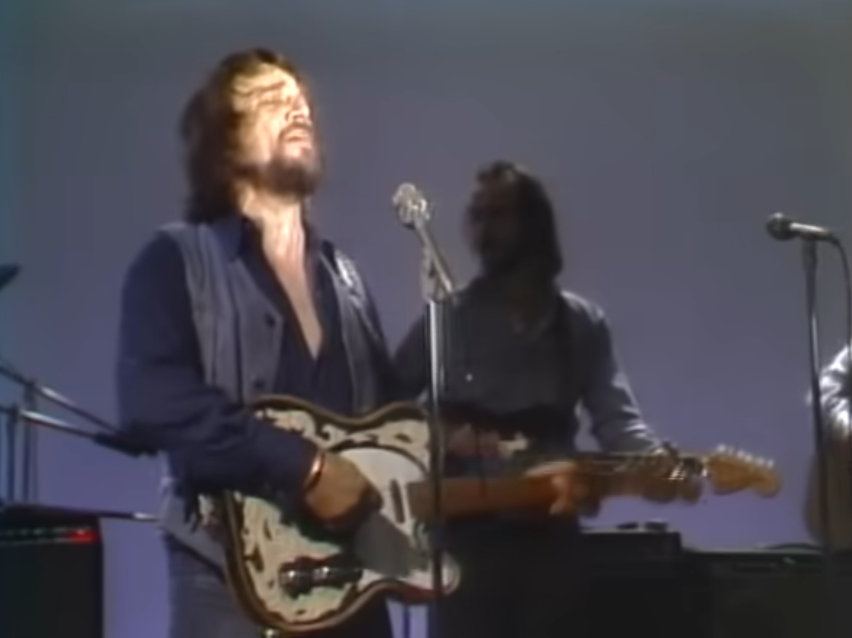 BGO Records, Lonesome On'ry And Mean/Ramblin man
BGO Records, Lonesome On'ry And Mean/Ramblin man
32. He Entered His Outlaw Era
If Jennings’ life were a movie, this is where we’d flashback to Buddy Holly’s advice: “Don’t ever let them tell you what to do…and never put limits on yourself. Don’t back up”. Armed with a rock ’n’ roll attitude, a new pit bull manager, and the love of his life by his side, Jennings was ready to take the world by storm.
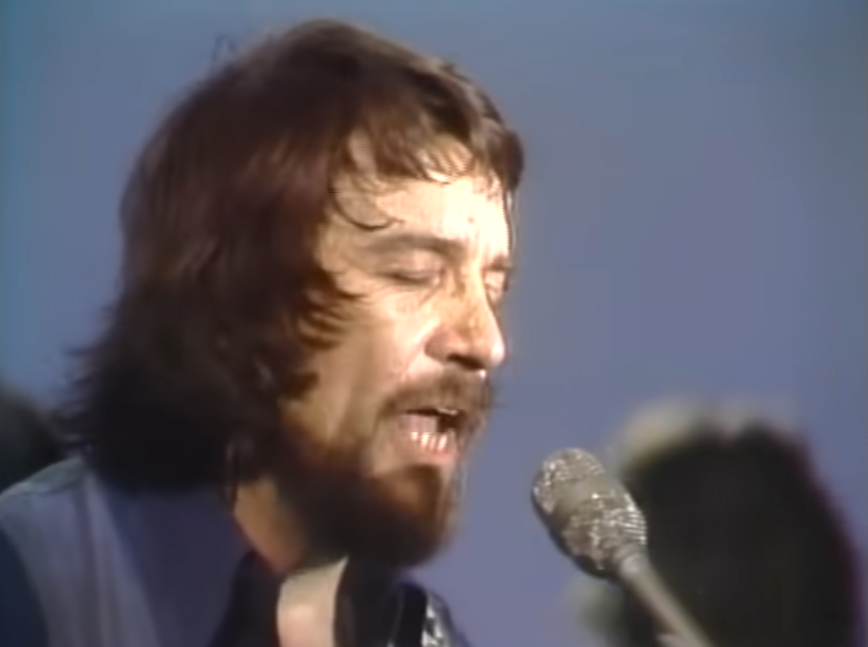 BGO Records, Lonesome On'ry And Mean/Ramblin man
BGO Records, Lonesome On'ry And Mean/Ramblin man
33. He Did It His Way
Thanks to his manager’s finagling, Waylon Jennings scored more money and creative control than ever before—and it paid off. In June 1974, he released This Time, which became his first number-one hit. Jennings was now a bona fide superstar with an iconic look to match: huge sunglasses, bushy beard, and wide-brimmed black hat.
But with fame came trouble, and Jennings picked up one more rock star accessory: a troubling habit.
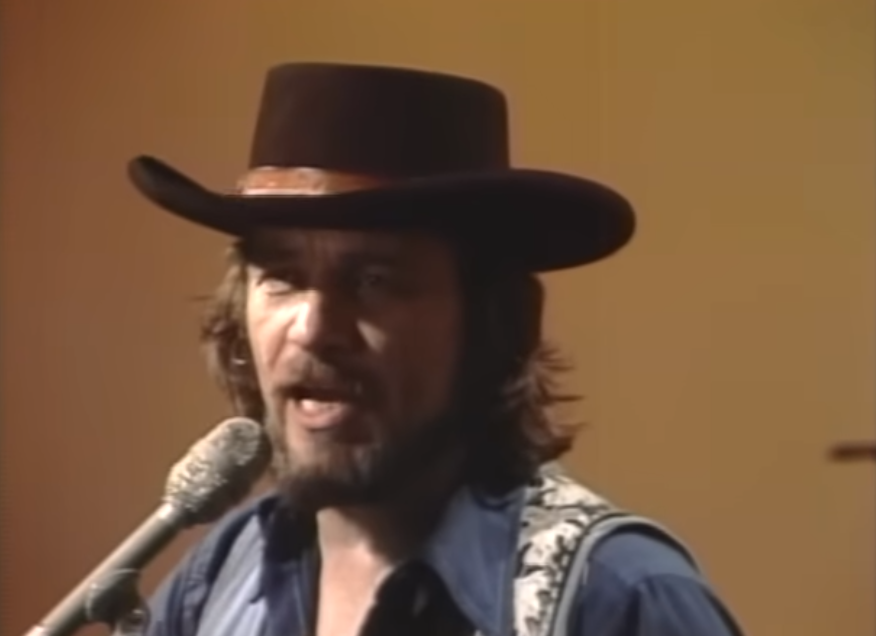 BGO Records, Lonesome On'ry And Mean/Ramblin man
BGO Records, Lonesome On'ry And Mean/Ramblin man
34. He Was Hot Stuff
Jennings’ drummer, Richie, had a plan to get him off amphetamines—by introducing him to coke. As Robin Williams once joked, “[It’s] God’s way of saying you’re making too much money,” and for Jennings, this was spot-on—especially after Wanted: The Outlaws dropped. The album, featuring Jennings, Jessi, Willie Nelson, and Tompall Glaser, became the first country album to sell over a million copies.
As Jennings tells it, Ritchie gave him some coke, and, “I liked it. For the next 10 years, I liked it”.
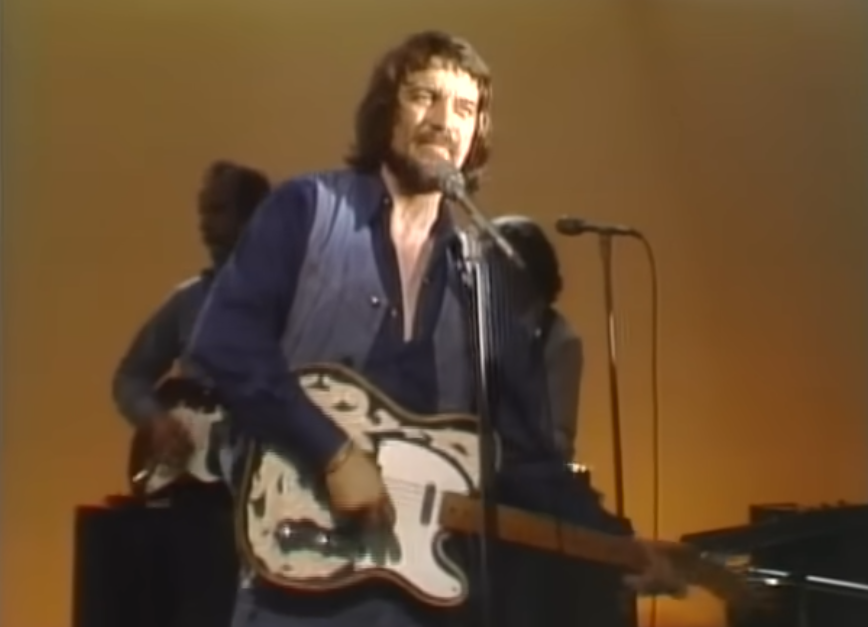 BGO Records, Lonesome On'ry And Mean/Ramblin man
BGO Records, Lonesome On'ry And Mean/Ramblin man
35. He Was Bleeding Cash
Indeed, Waylon Jennings was way too fond of the nose candy, to the point where his habit was costing him $1,500 a day. He knew he was an addict and so did everyone around him—including the authorities. In 1977, during one of Jennings’ recording sessions, he received a package from his manager.
After peeking inside, he knew it was the happy powder he’d been expecting.
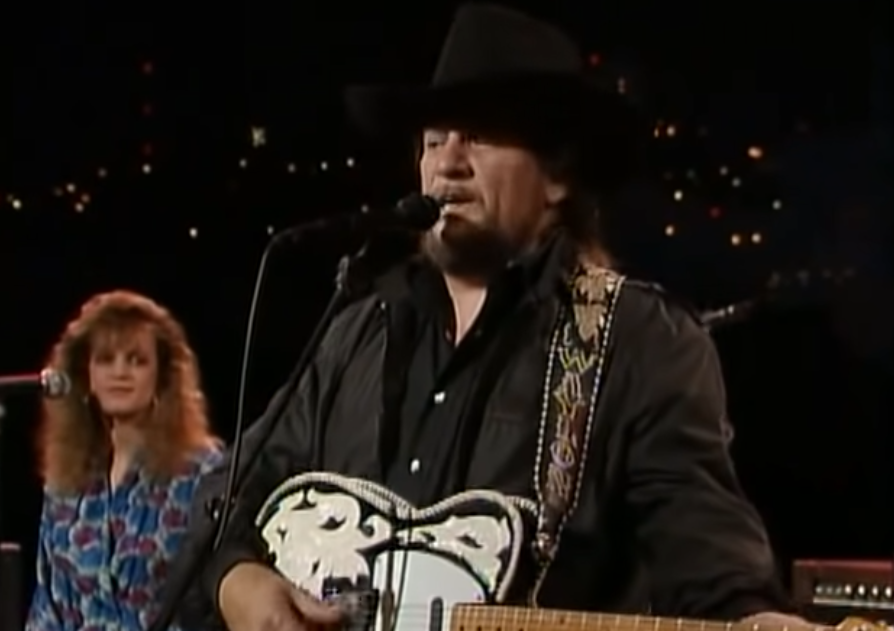 New West Records, Live from Austin, TX (2006)
New West Records, Live from Austin, TX (2006)
36. He Was Caught In A Trap
Waylon Jennings set the package down and got back to recording—until he heard something odd in his headphones. The sound engineer was secretly holding down the talkback button, letting Jennings hear the newly-arrived DEA agents say they’d tracked a package with contraband inside.
Cool as ever, Jennings made the toss of a lifetime, discreetly ditching the package right under their noses. He wasn’t out of the woods yet, though—not by a long shot.
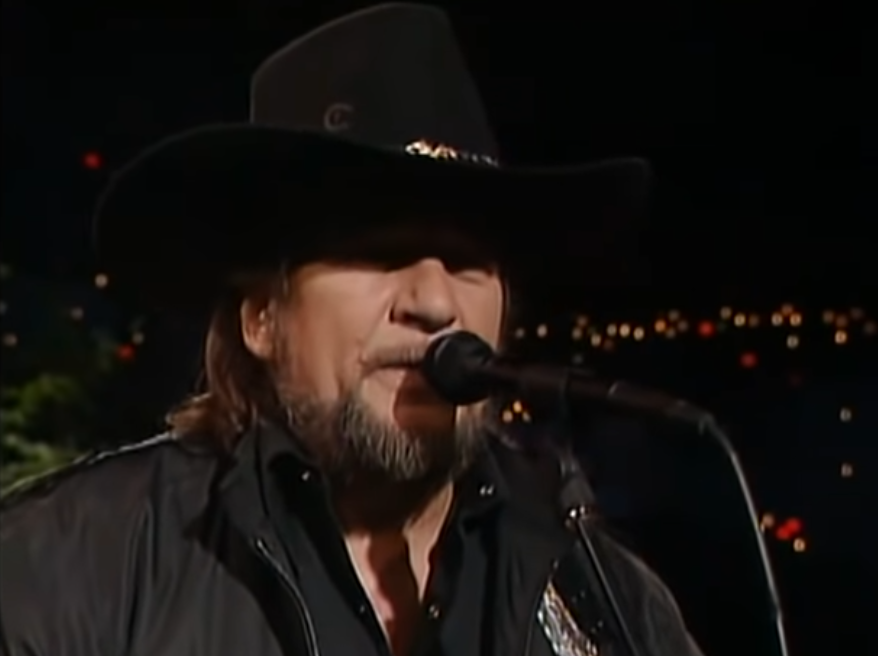 New West Records, Live from Austin, TX
New West Records, Live from Austin, TX
37. He Was Cooler Than Fonzie
A true outlaw wouldn’t lose their cool in this tense situation and Jennings aced the assignment. Sitting in a soundproof booth, he knew the DEA agents had no idea he could hear them. So, like a pro, he continued with the recording session—extra loud for good measure. Funny enough, he even used that take on the album!
As for the agents, they were taken down by a little thing called hubris…
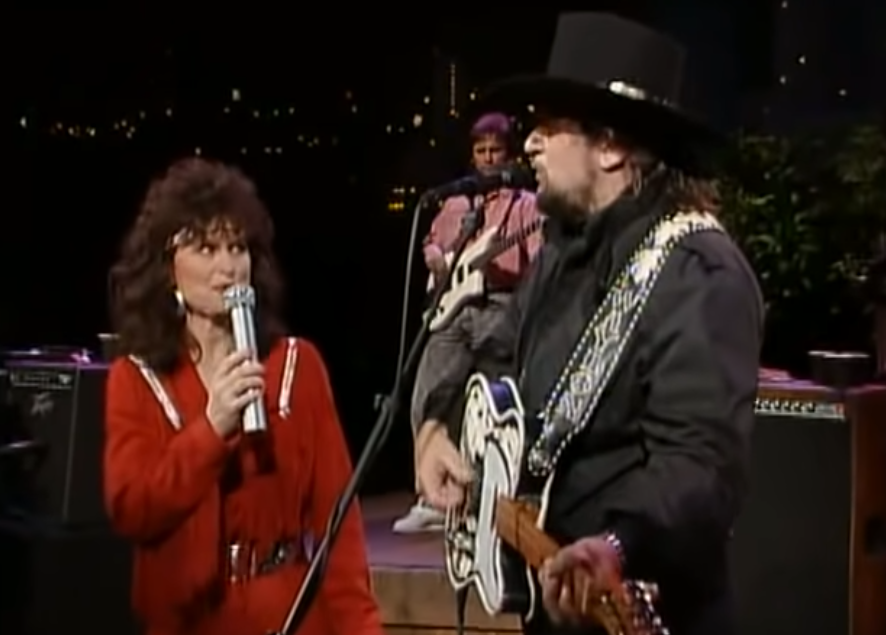 New West Records, Live from Austin, TX
New West Records, Live from Austin, TX
38. He Fought The Law
The DEA had been so sure of their plan that they made a rookie mistake. They put the wrong address on the search warrant. They couldn’t search the recording studio because the address on the warrant was for Jennings’ office, and Jennings’ secretary had brought the package over from there.
As they stood there waiting helplessly for an updated warrant, they heard a toilet flush and knew their case had literally gone down the drain.
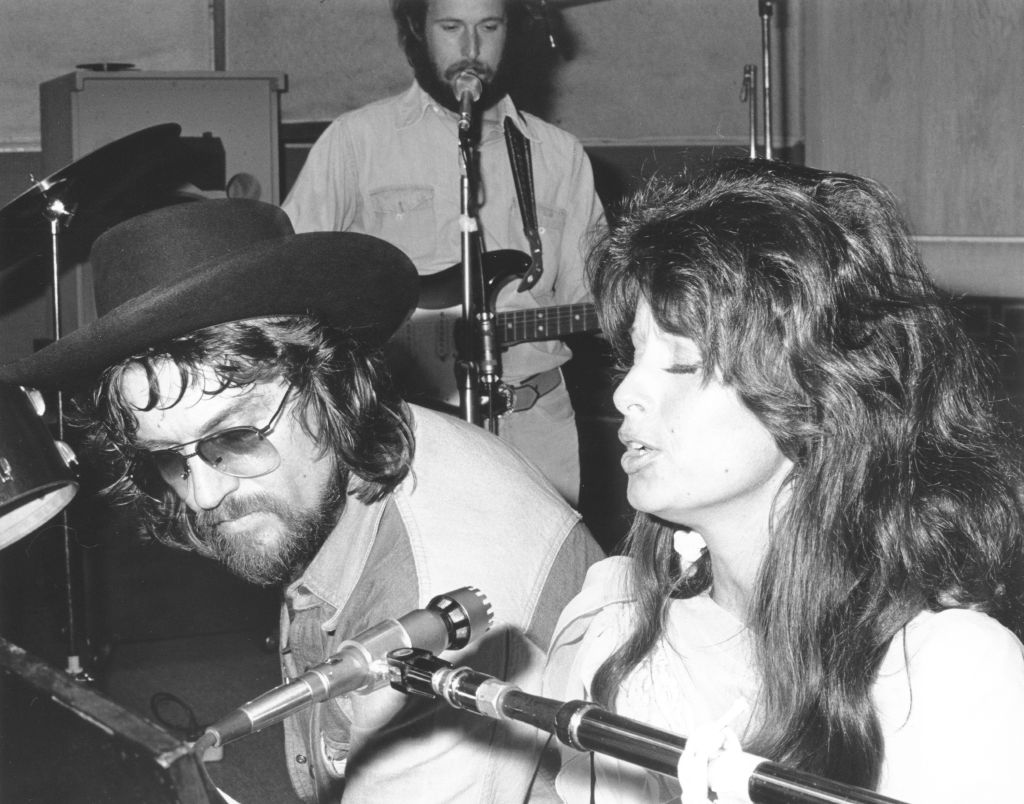 Michael Ochs Archives, Getty Images
Michael Ochs Archives, Getty Images
39. He Made Lemonade
Waylon Jennings was at the heart of a media feeding frenzy, but after days of searching, the DEA still hadn’t found anything in his possession. The court case dragged on for months and cost Jennings 100 grand, but in the end, the charges were dropped. Bonus: Waylon got a ton of free publicity and he wrote a hit song about it called “Don’t You Think This Outlaw Bit’s Done Got Out of Hand?”
Too bad the bust did nothing to slow down his drug habit.
40. He Was Just A Good Ol’ Boy
In 1979, Waylon Jennings put his deep Southern twang and DJ skills to good use as the narrator of the hit show The Dukes of Hazzard. He called it “a moonshine excuse for car chases and watching Catherine Bach’s [behind] in cut-off jeans.” The producers loved his voice so much that they asked him to create the theme song, which became the biggest hit of his career.
41. He Was Out Of Control
Watching her husband spiral into the abyss was heartbreaking, but Jessi Colter knew she couldn’t force Waylon Jennings to kick his habit. Worse still, his music was slipping—he was hearing things that weren’t there and losing his creative instincts. But the worst wake-up call involved Jessi and Jennings’ son, Shooter…
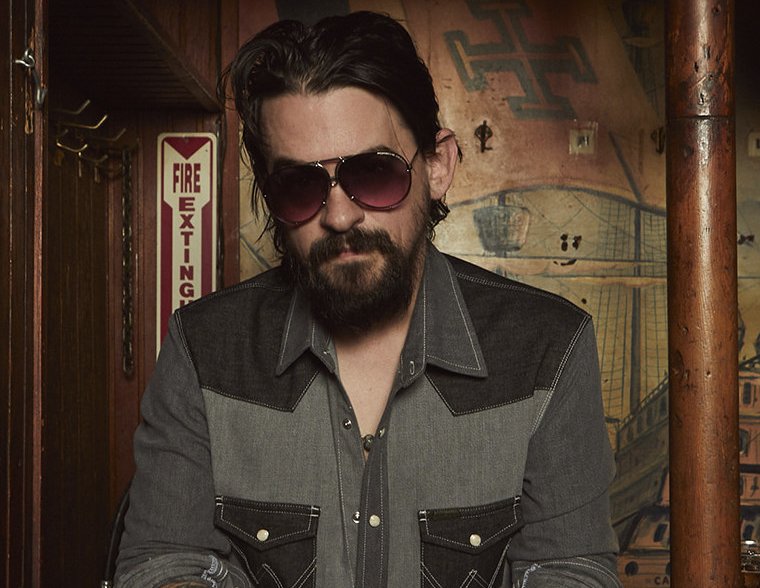 Moofookin, CC BY-SA 4.0, Wikimedia Commons
Moofookin, CC BY-SA 4.0, Wikimedia Commons
42. He Was Scared Straight
It was clear that the universe had Jennings’ back when it spared him from Buddy Holly’s doomed plane, but in 1984, it delivered an even more chilling message via his three-year-old son. Despite Jennings’ efforts to hide his habits, little Shooter found one of his straws and started sniffing from it.
The sight rocked Jennings to the core, and finally pushed him to seek the help he so desperately needed.
43. He Couldn’t Escape Controversy
The 1985 “We Are the World” incident makes us wonder if maybe newly sober Waylon Jennings was feeling a bit ornery. More than 45 of the best-known musicians of the time had gathered together to record a charity song for Africa. When Stevie Wonder suggested they sing part of the song in Swahili, Jennings was not having it.
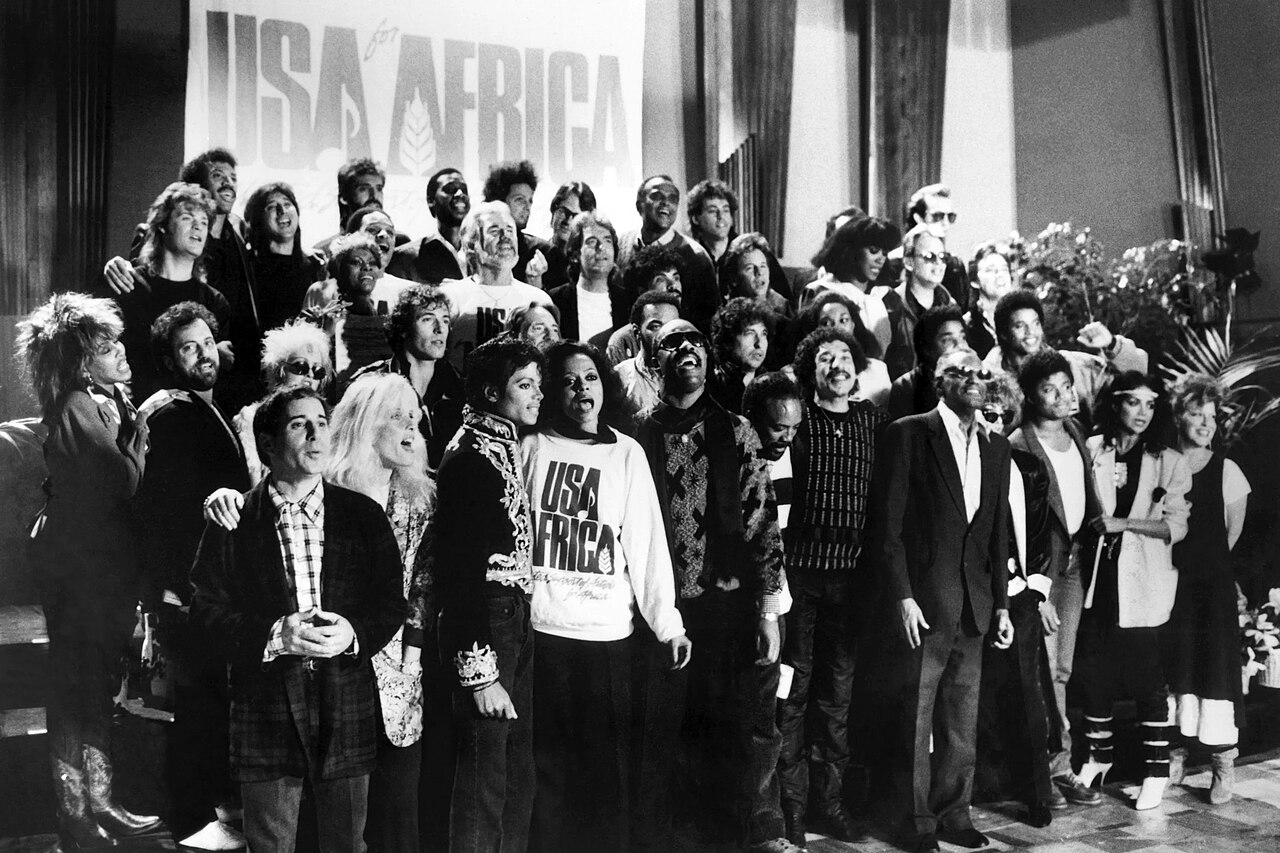 Henry Diltz, Wikimedia Commons
Henry Diltz, Wikimedia Commons
44. He Ain’t Too Tolerant
“No good ol' boy sings in Swahili,” Jennings huffed before storming out of the session. Swahili didn’t make it into the song, but somehow Jennings’ name made it into the credits. Whether he actually returned to the studio is up for debate, but one thing’s certain—the song was a smash and went on to raise over $80 million.
As for Jennings? It was around this time that his career and his health started to slide downhill—fast.
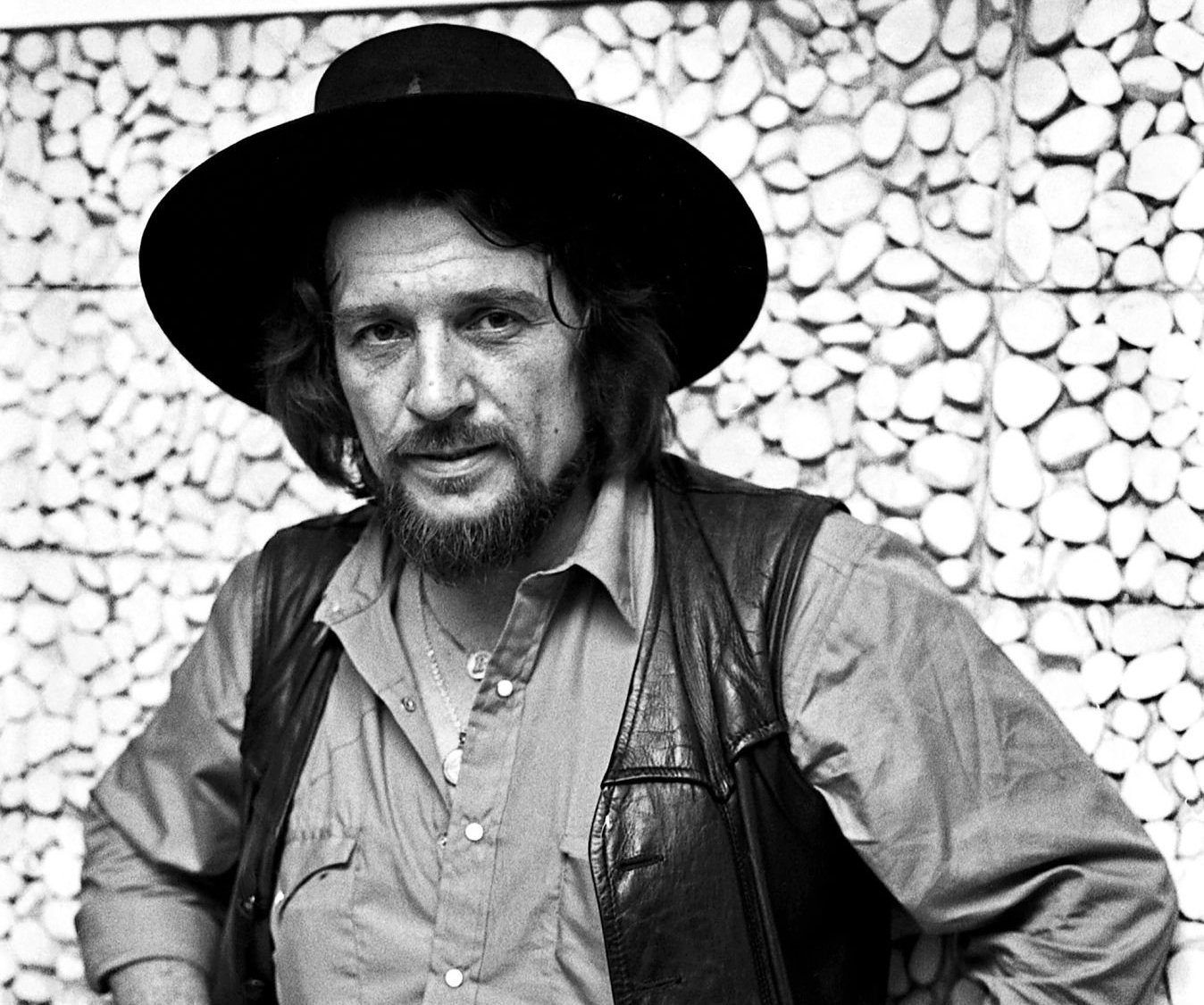 Stephanie Chernikowski, Getty Images
Stephanie Chernikowski, Getty Images
45. His Body Was No Temple
Waylon Jennings was now on the straight and narrow, but he was clearly trying to fill some sort of existential hole. He now smoked a whopping seven packs a day and he gorged on outrageous amounts of food—three grilled cheese sandwiches for lunch, a dozen refried donuts as a snack, and all of the chicken-fried steak, biscuits, and gravy he could devour.
It had been four years since he kicked the habit but his new ones were about to land him in serious trouble.
46. He Had A Surprise Visitor
After narrowly escaping a heart attack, Waylon Jennings ended up needing quadruple bypass surgery. When he woke up, he was stunned to see his old friend Johnny Cash—though Cash wasn’t exactly a picture of health either. They got a doctor to check Johnny out and immediately ordered his emergency bypass surgery.
During their recovery, Jennings and Cash found humor in the situation, laughing about how superstar status flies out the window the moment you’re stuck in one of those backless hospital gowns.
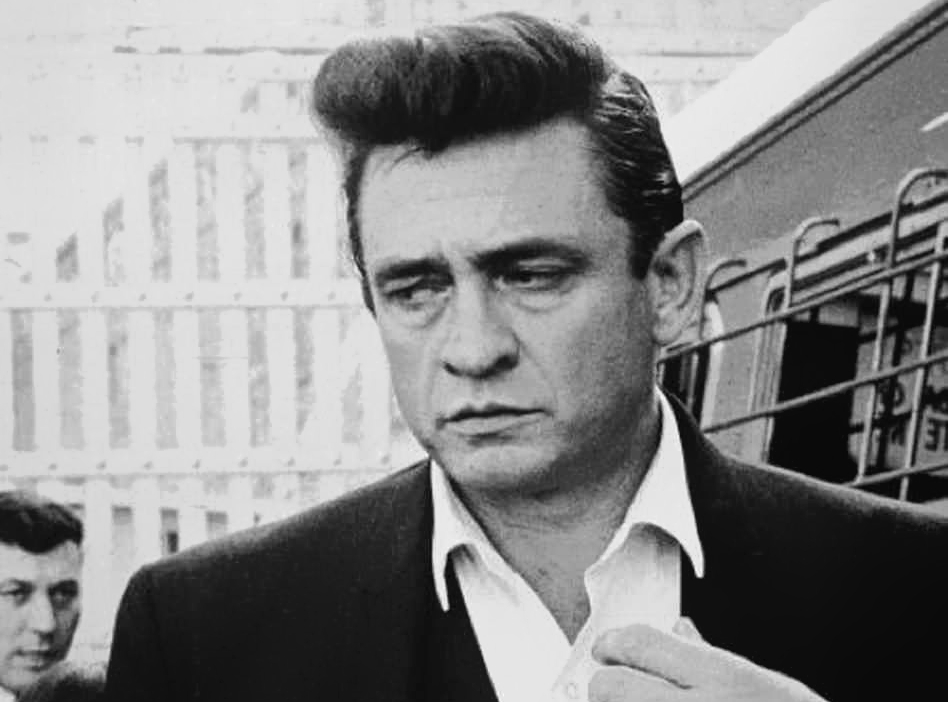 Dillan Stradlin, CC BY-SA 4.0, Wikimedia Commons
Dillan Stradlin, CC BY-SA 4.0, Wikimedia Commons
47. His Past Was Catching Up To Him
The human body can only take so much. On top of his heart trouble, Waylon Jennings was hit with more bad news: Type 2 diabetes. By 2000, the pain in his leg was so bad that he had to stop touring. Surgery didn’t help the circulation, and by the next year, things got worse—he had to have his foot amputated.
48. He Went Out A Legend
Sure, Jennings clashed with the country music establishment, but it’s hard to deny his influence on the genre. In 2001, he earned a spot in the Country Music Hall of Fame. Sadly, he couldn’t attend the ceremony because he was in too much pain from his diabetes. Just a few months later, he passed in his sleep from complications from the disease.
49. He Was Haunted By His Joke
Way back when Buddy Holly, Ritchie Valens, and the Big Bopper went down in a plane crashing during the Winter Dance Party Tour, Waylon Jennings was left reeling, knowing not only that he’d given up his seat to the Big Bopper—but that some of his final moments with Holly had ended with a terrible joke. Just the day before, Holly had been ribbing him about being afraid to fly, but Jennings insisted that wasn’t the reason why he wasn’t getting on the plane.
Holly, grinning, had said, “I hope your damned bus freezes up again”. Jennings had joked back, “Well, I hope your plane crashes”. Jennings, a superstitious Southern boy of just 21, thought he had 100% caused the crash that took his friend, bandmate, and mentor. It was a heavy cross to bear.
50. He Was One-Of-A-Kind
Reflecting on his legacy, Waylon Jennings once said, “You never do know where the stones you throw will land”. He illustrated this by describing how he was once at an awards ceremony when someone behind him said, “Mr. Jennings, you’re like a god to me”.
Jennings turned to see Billy Ray Cyrus—and all he could think was, “If I’m your god, what does your devil look like”?

